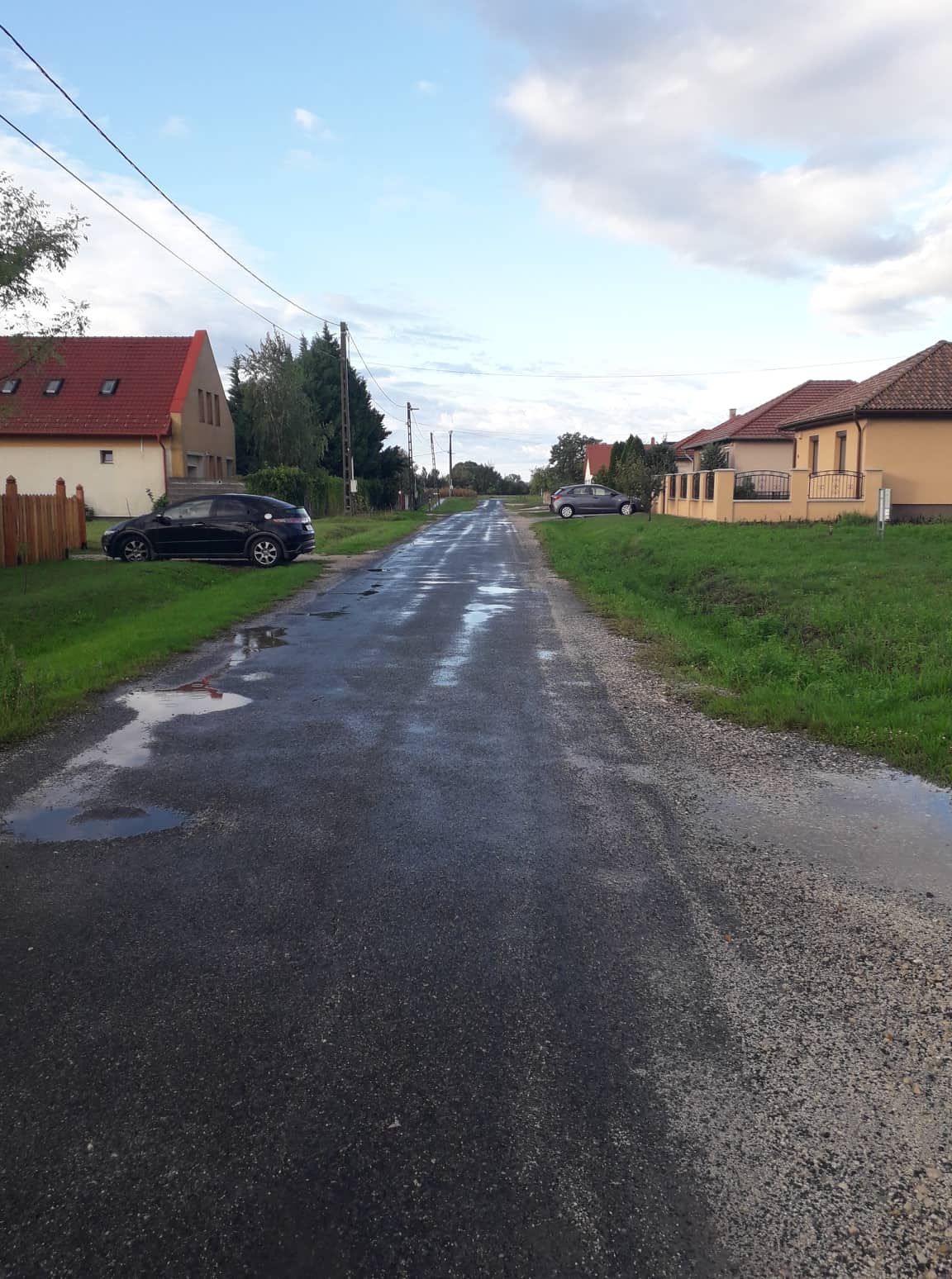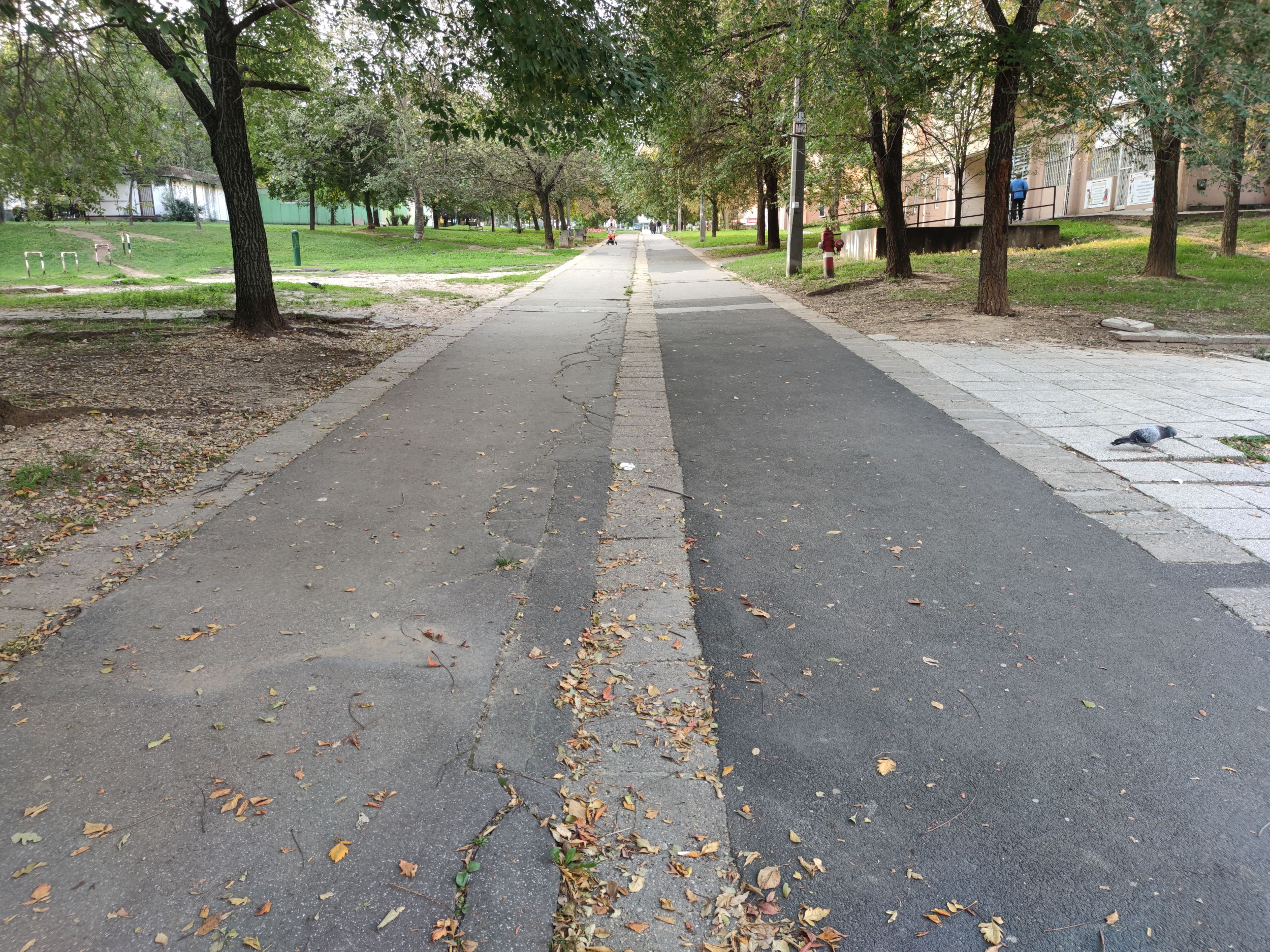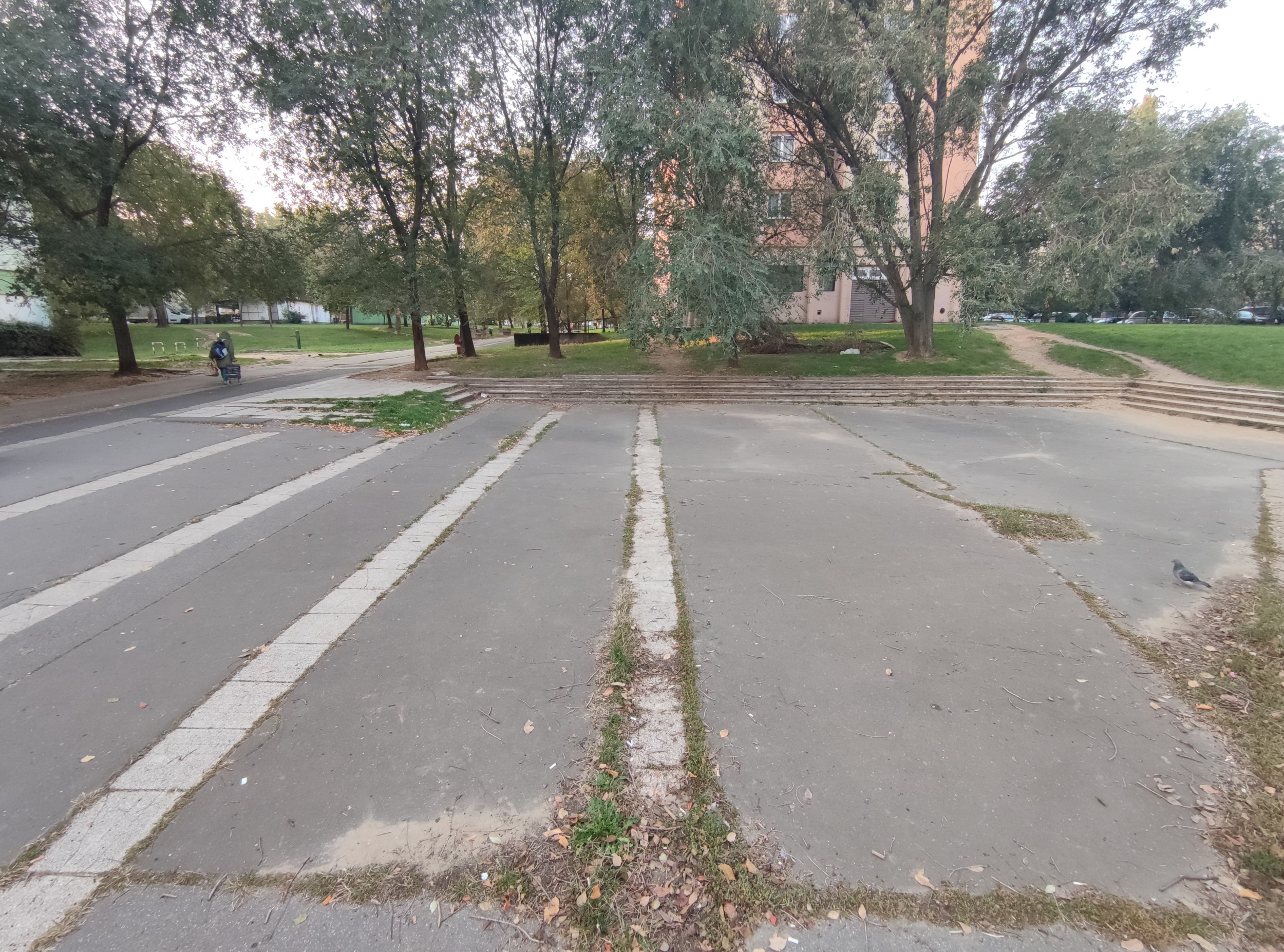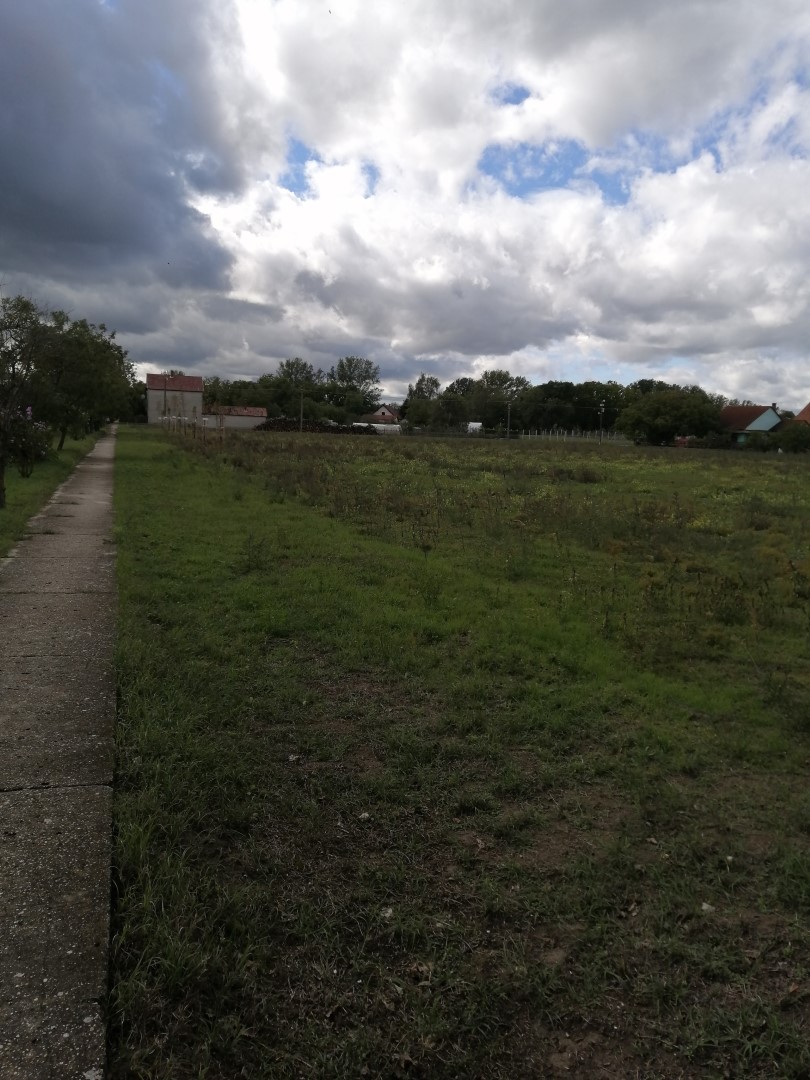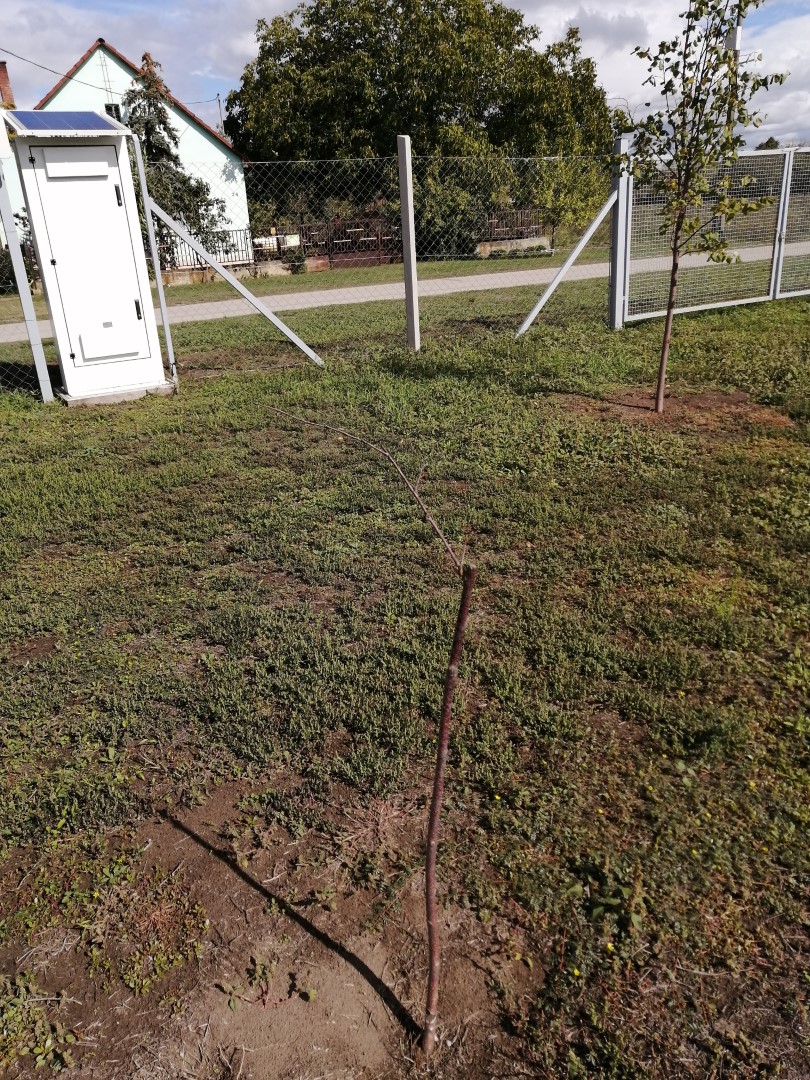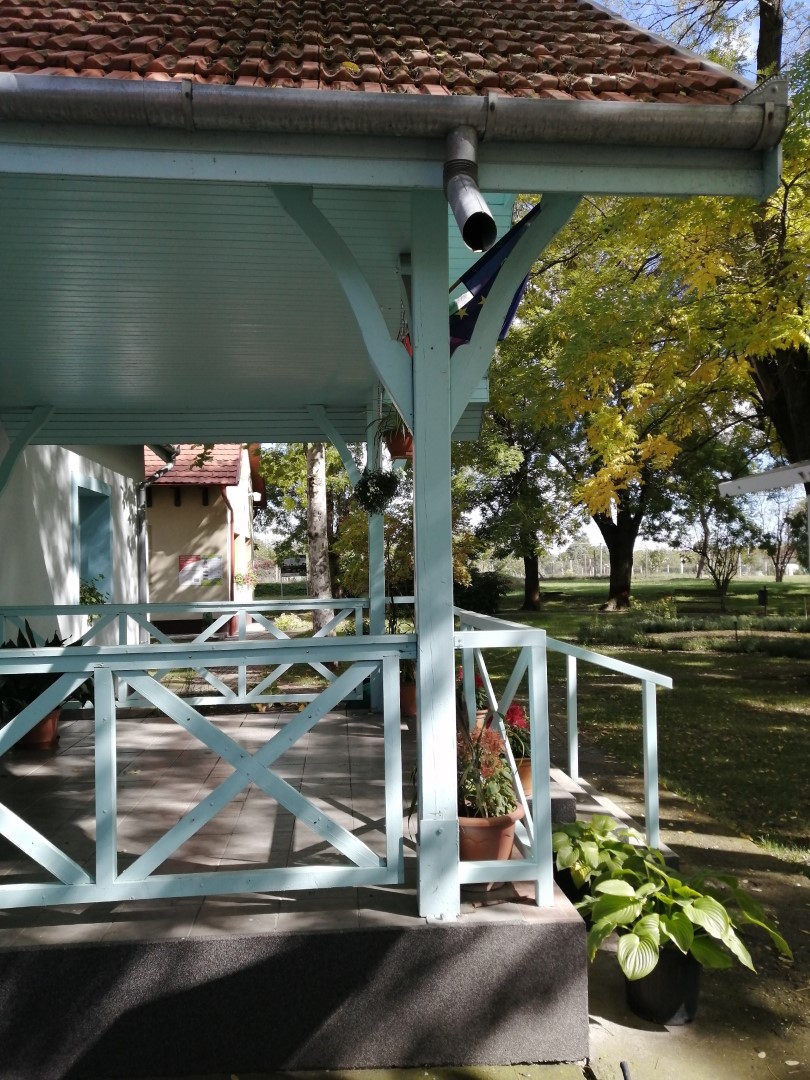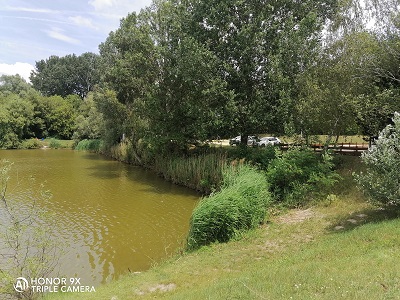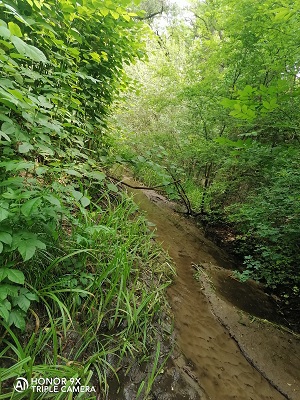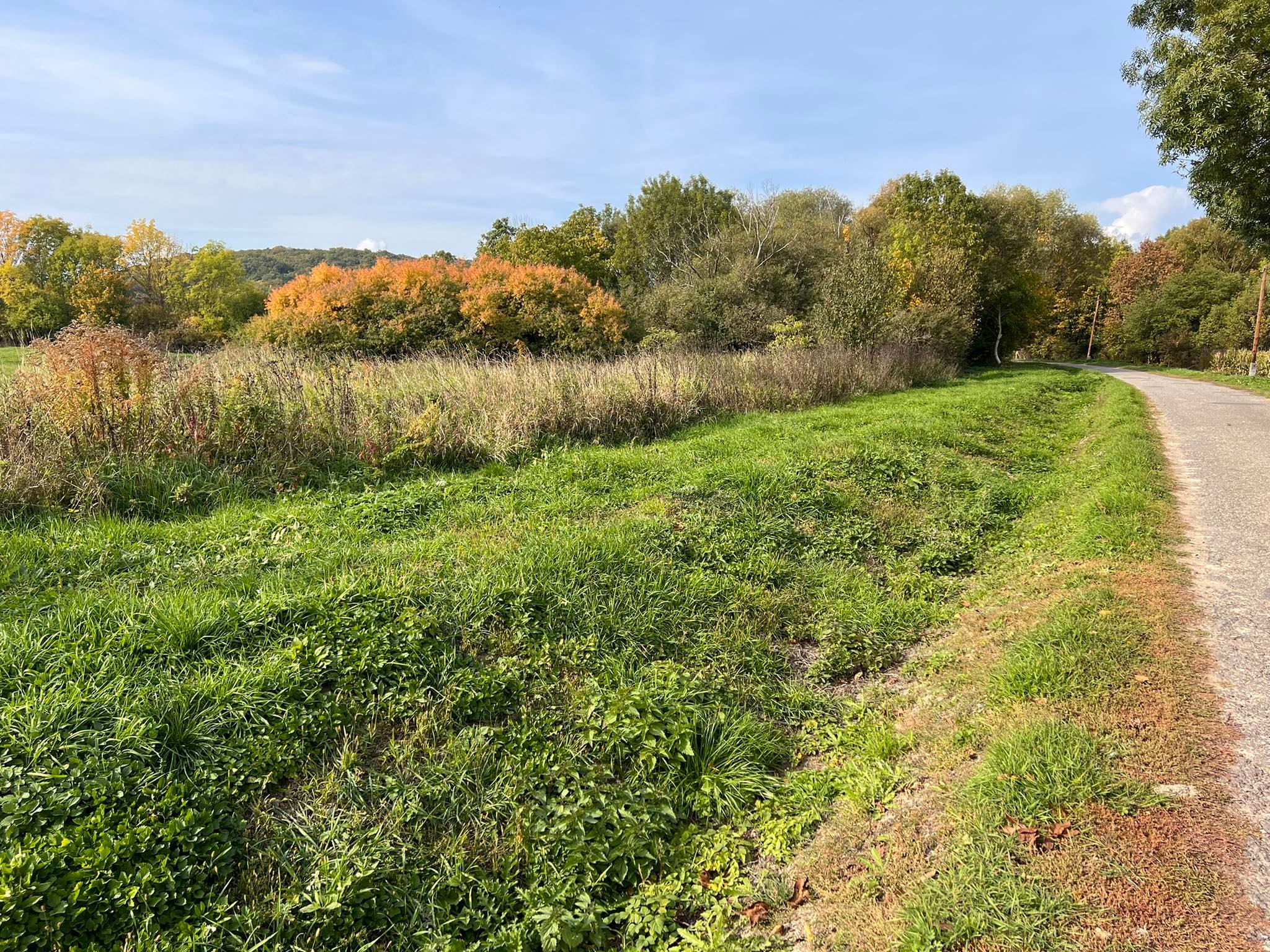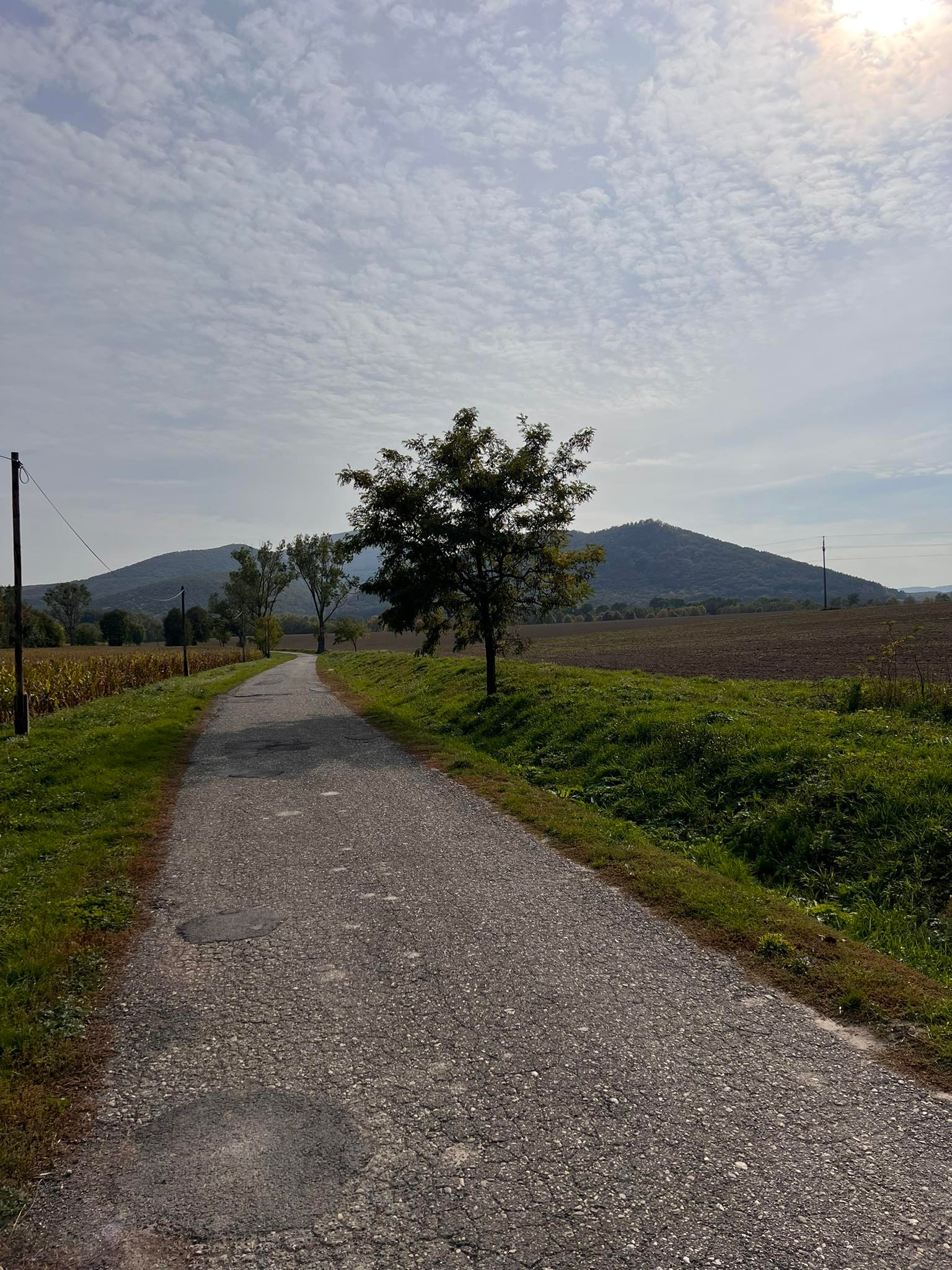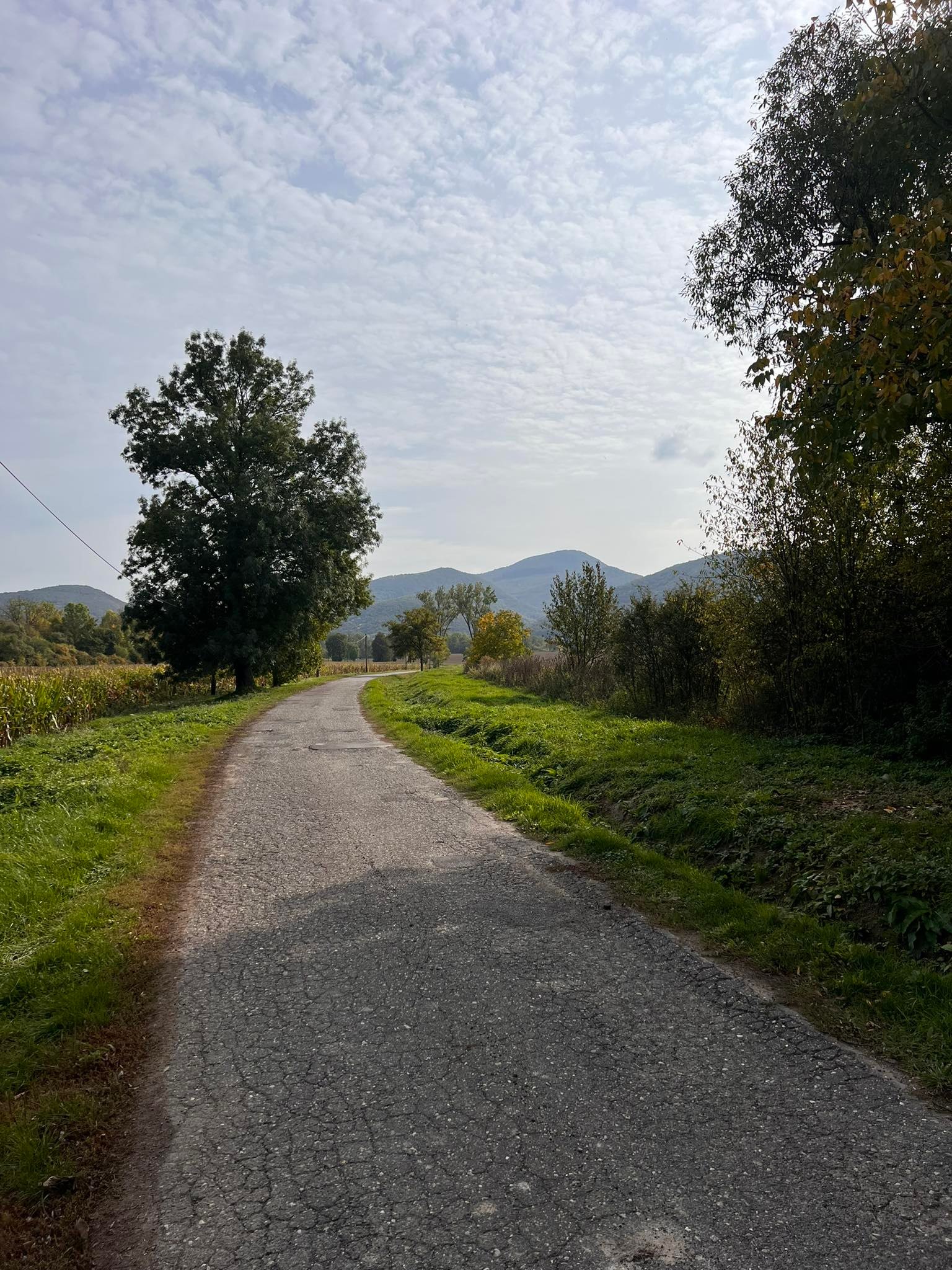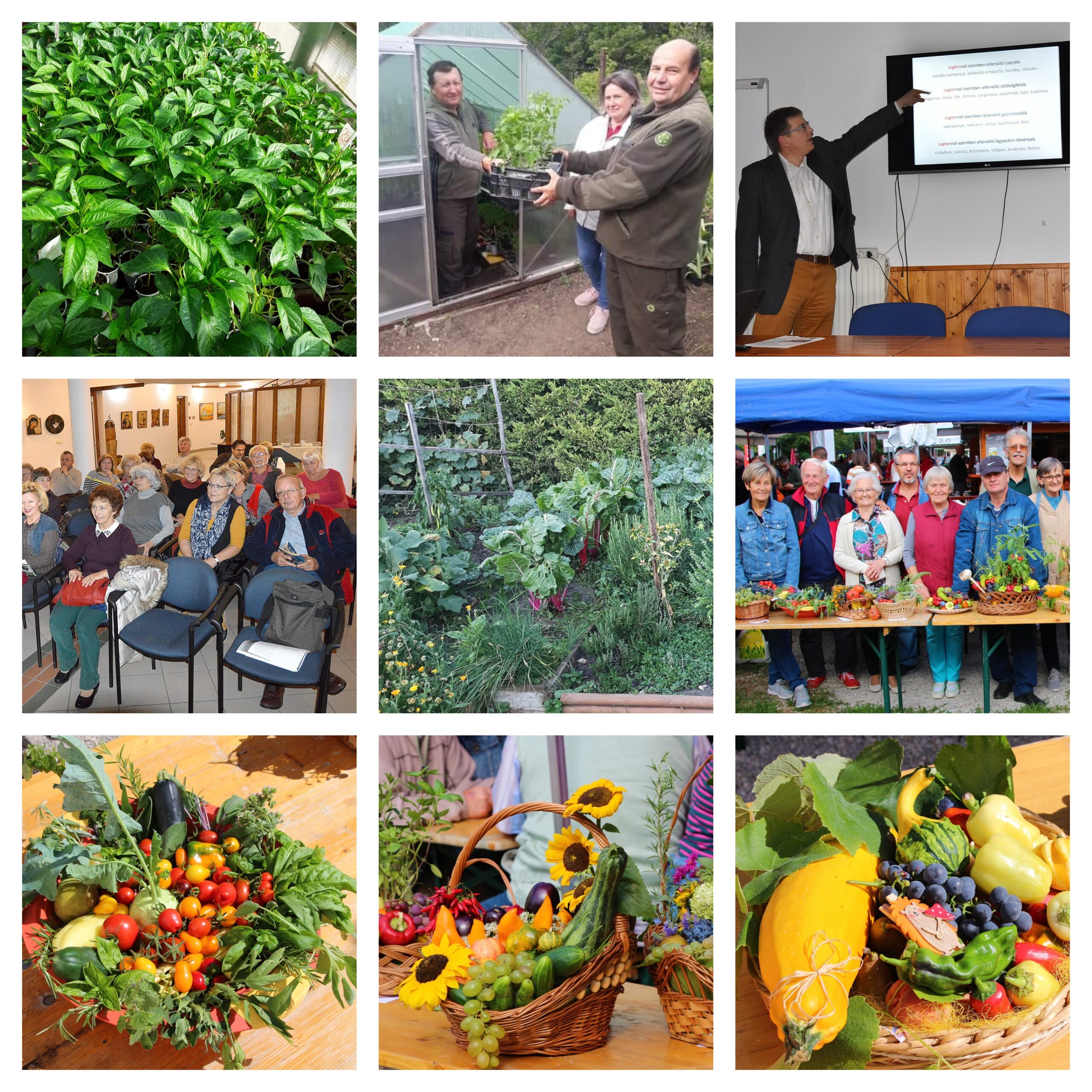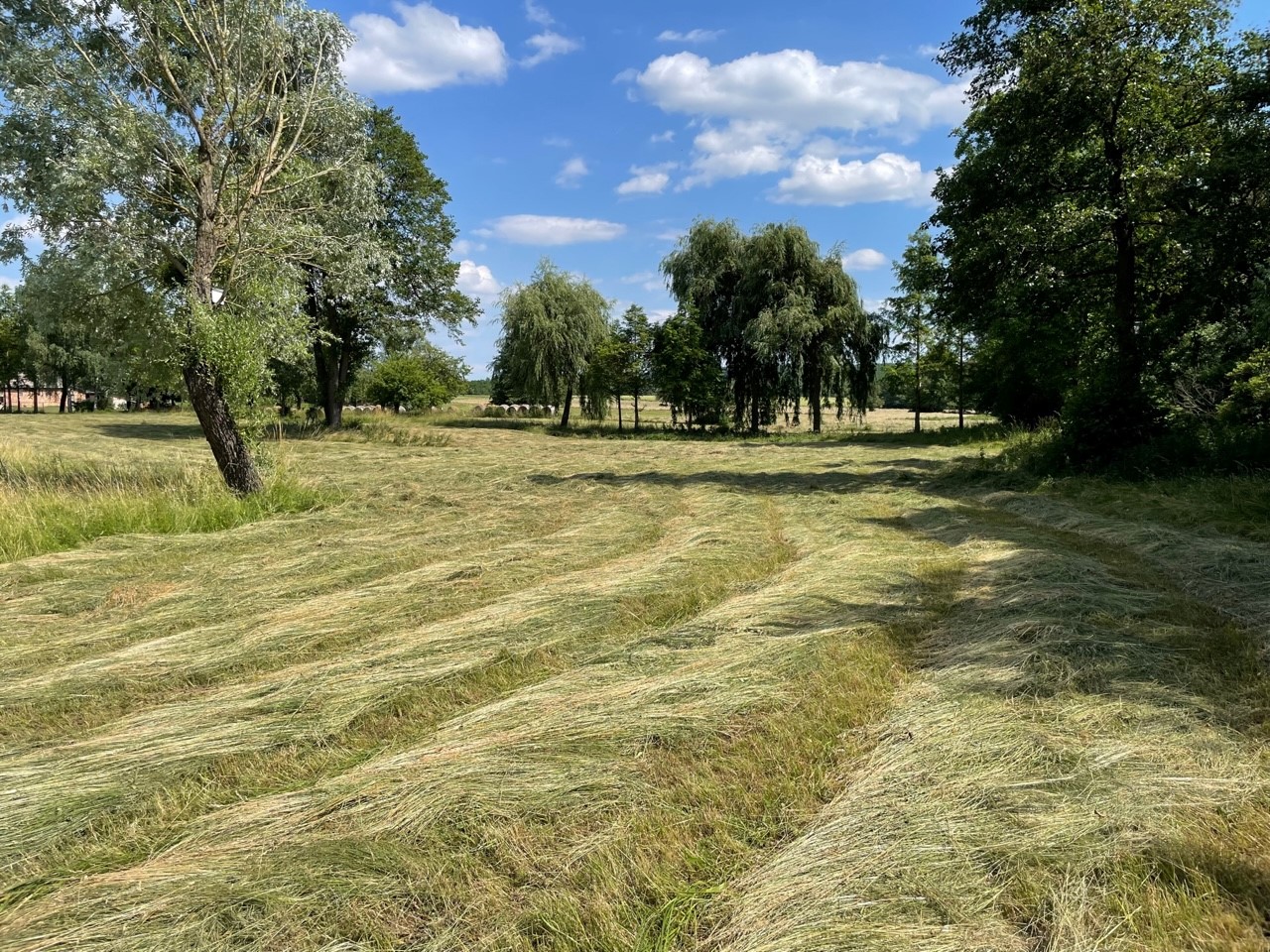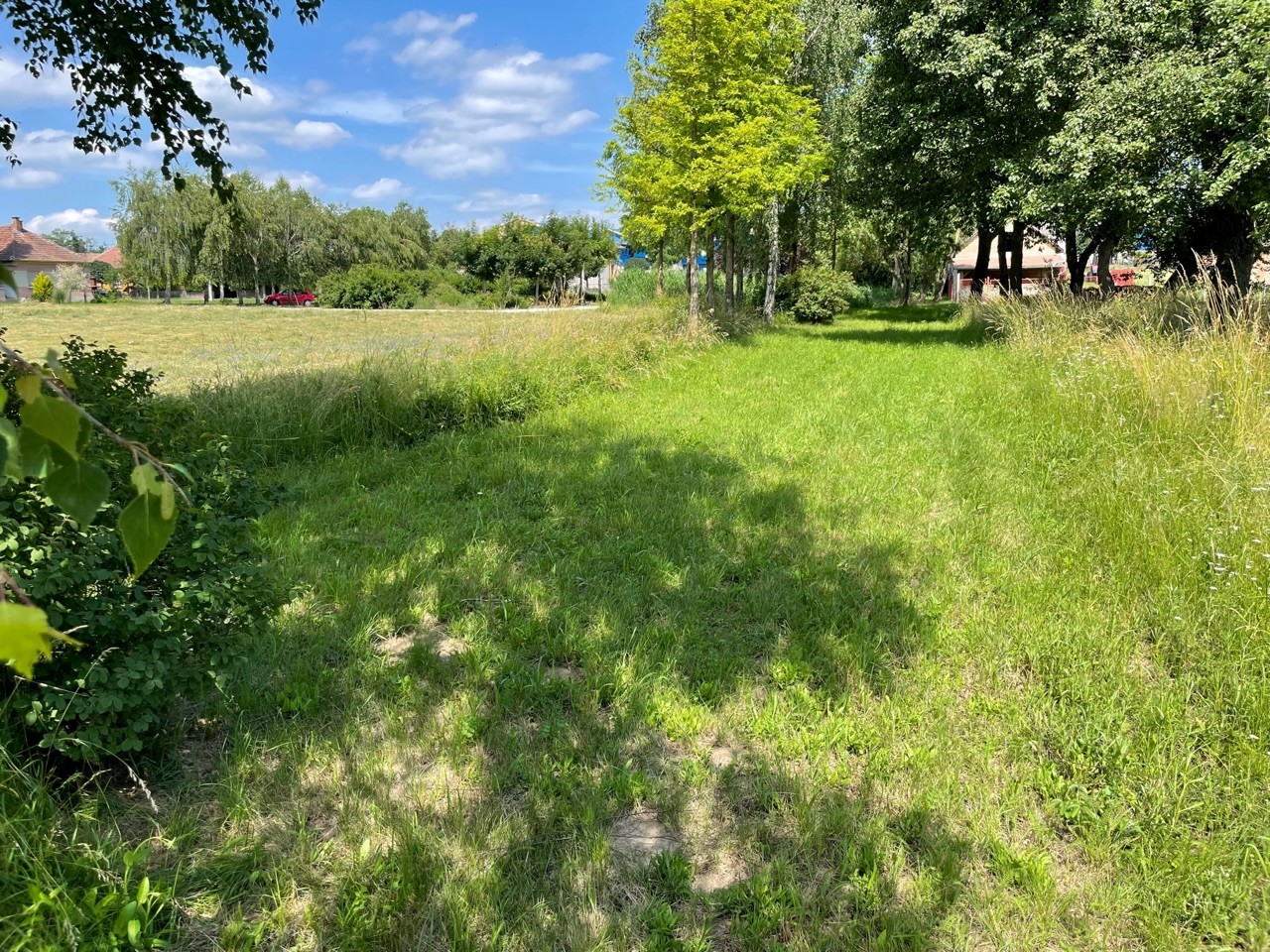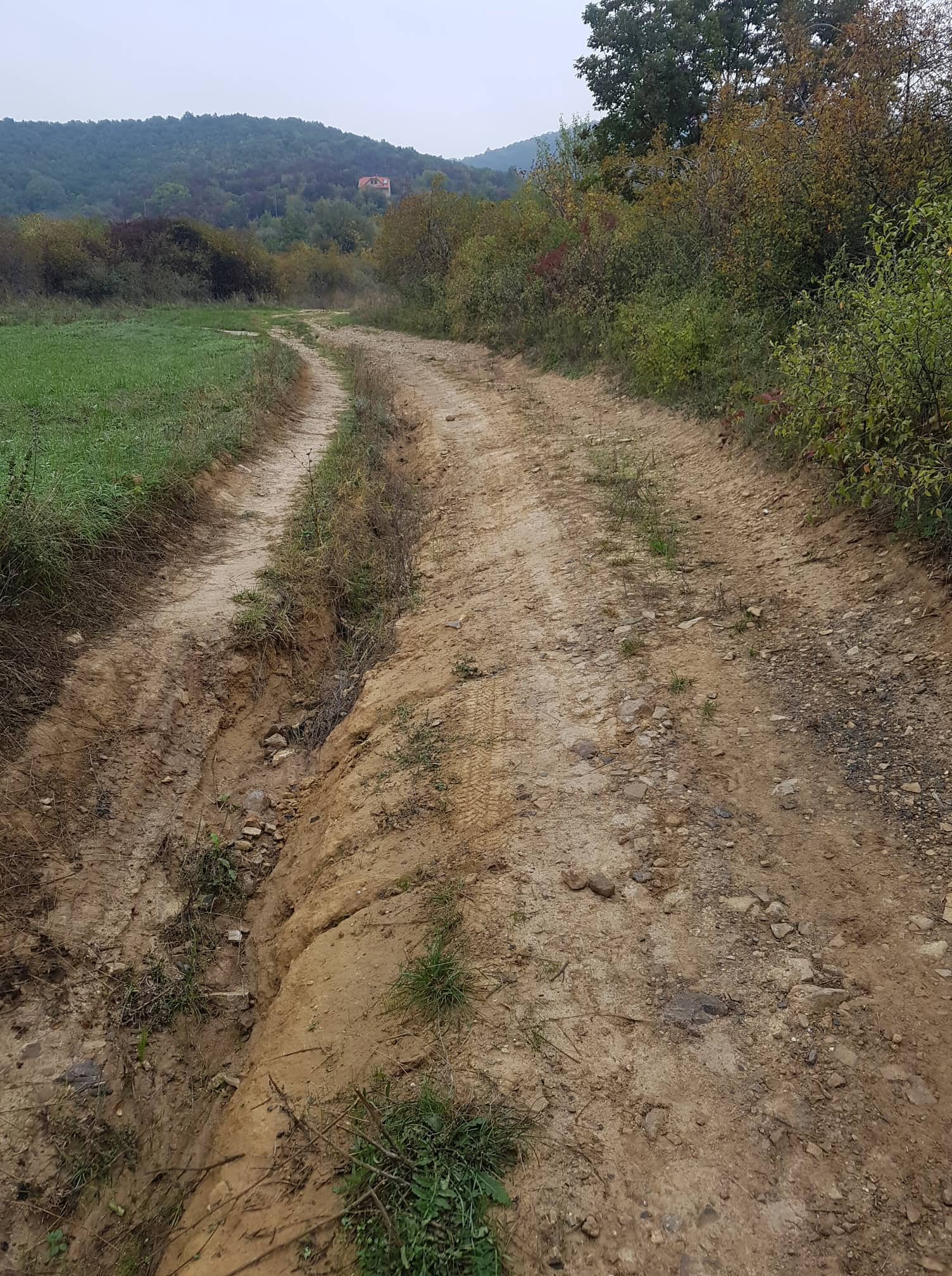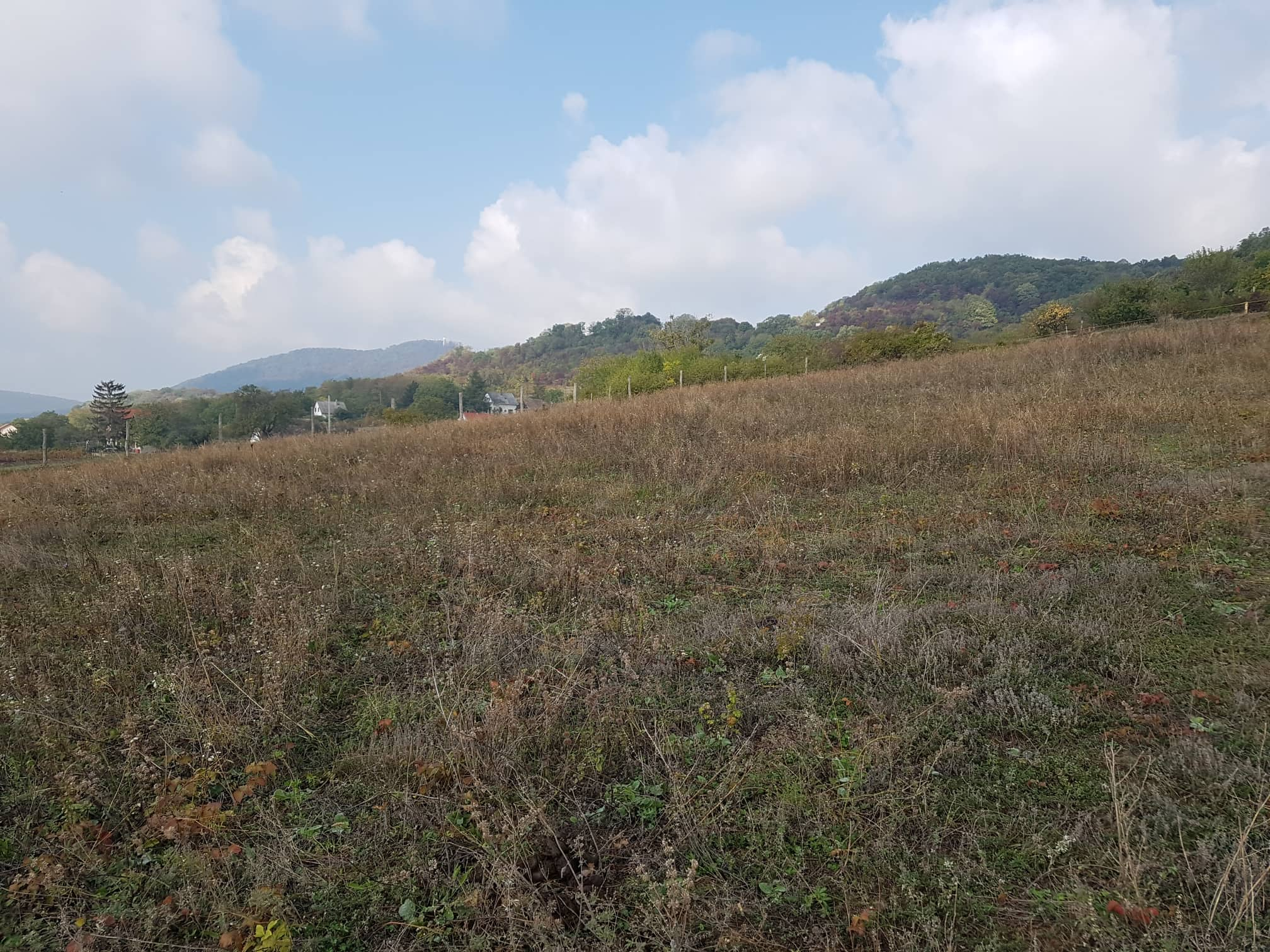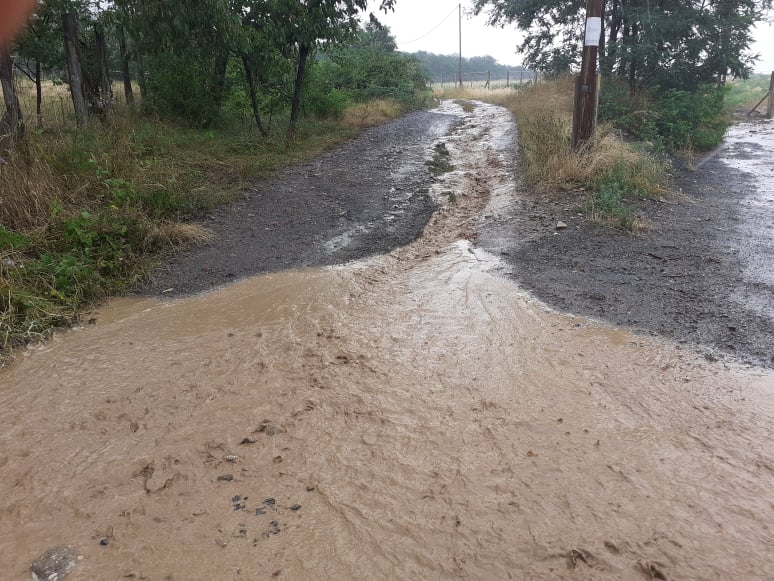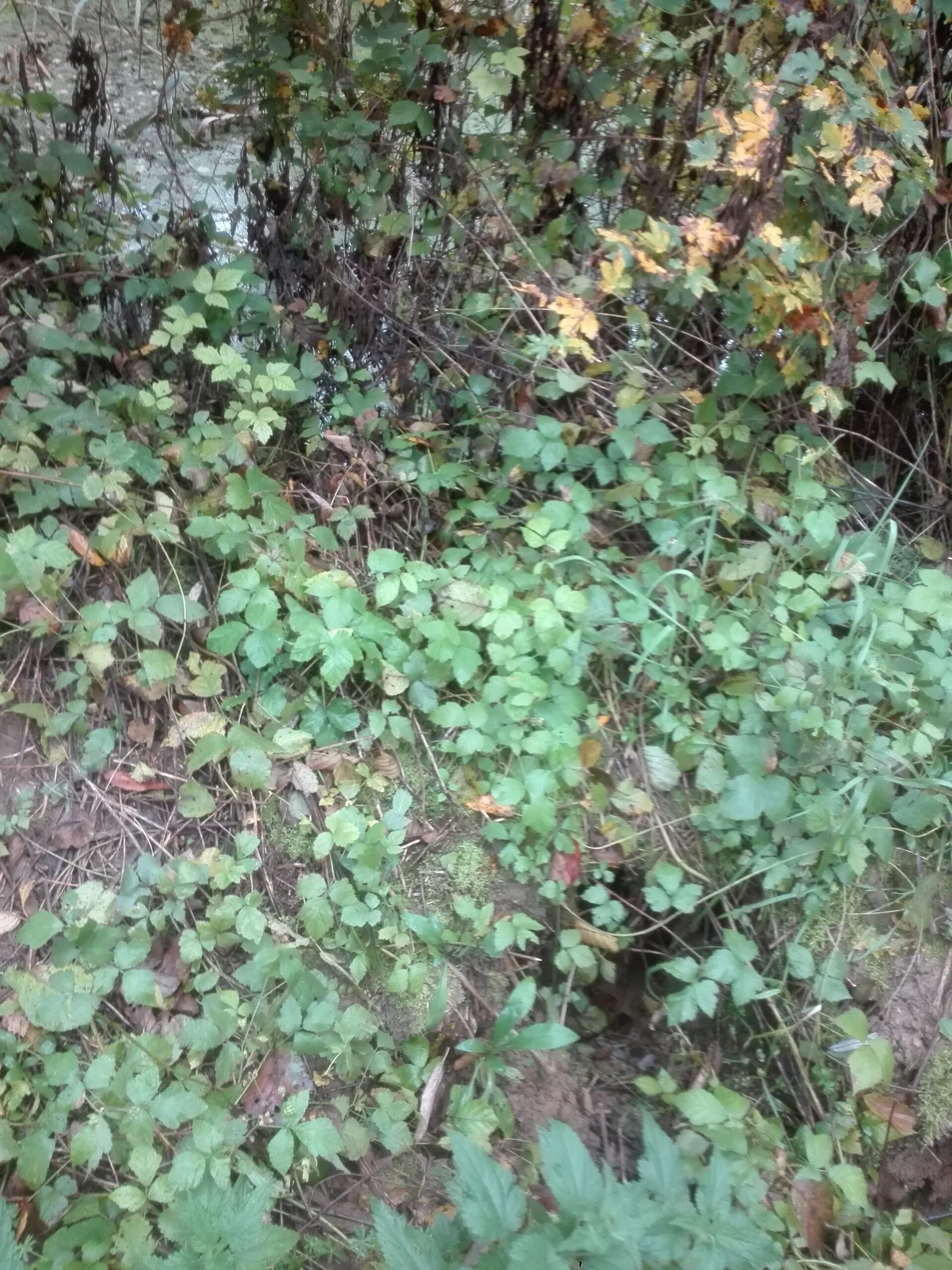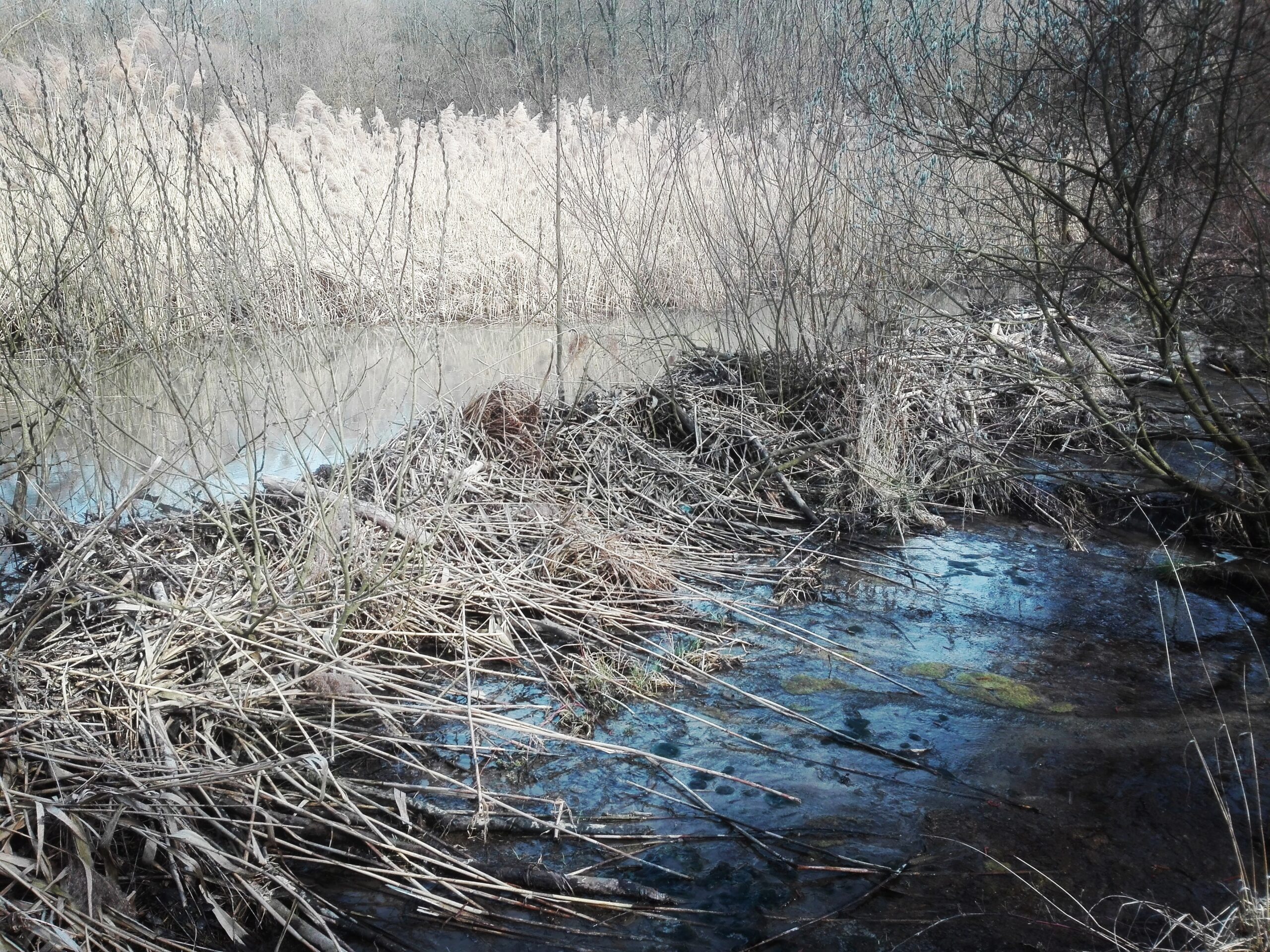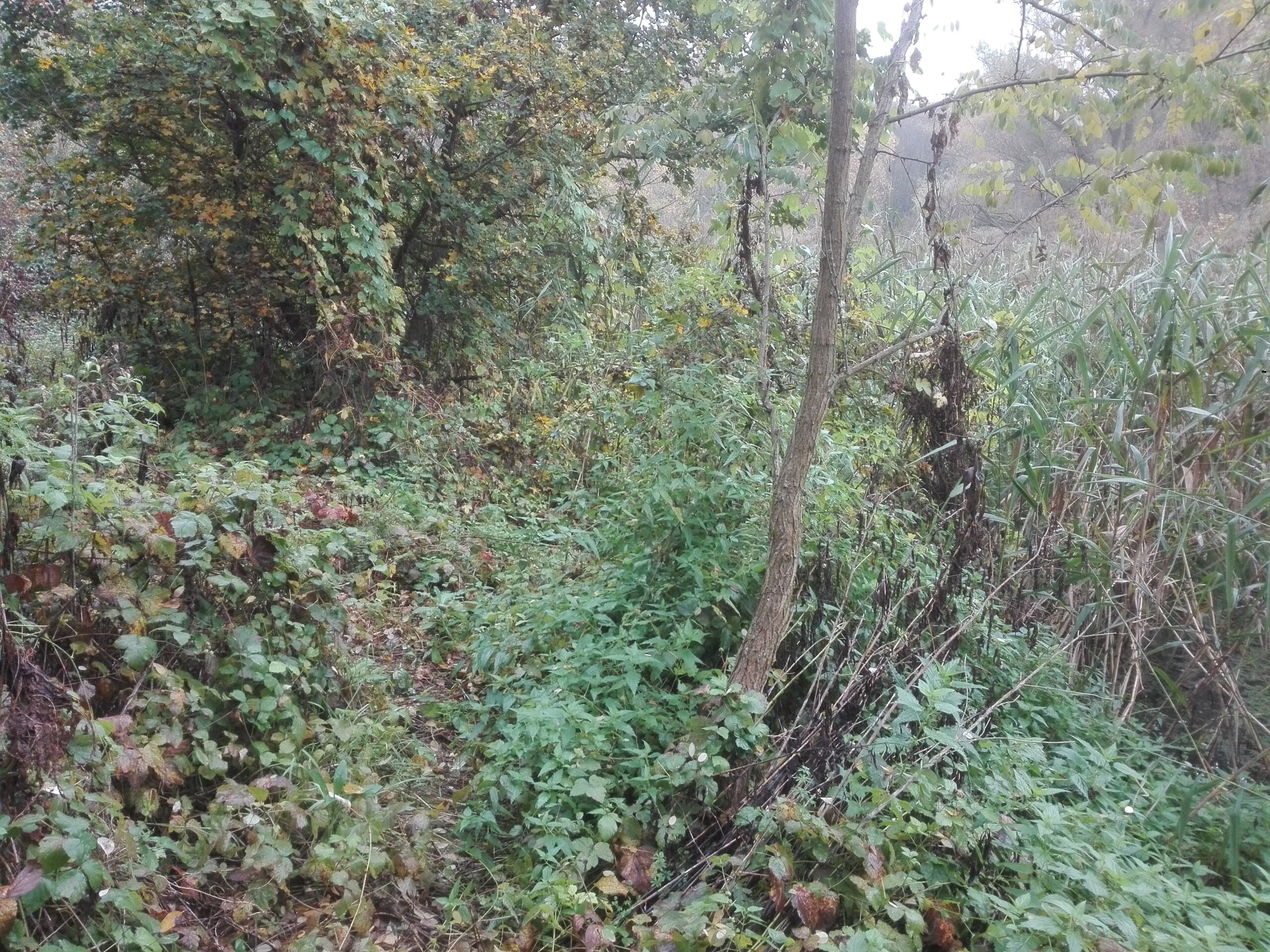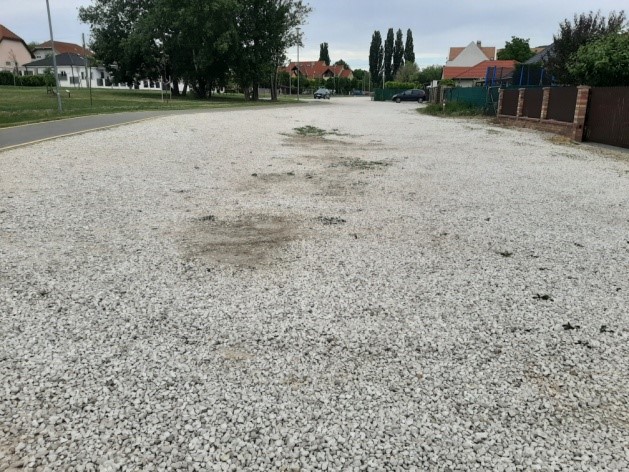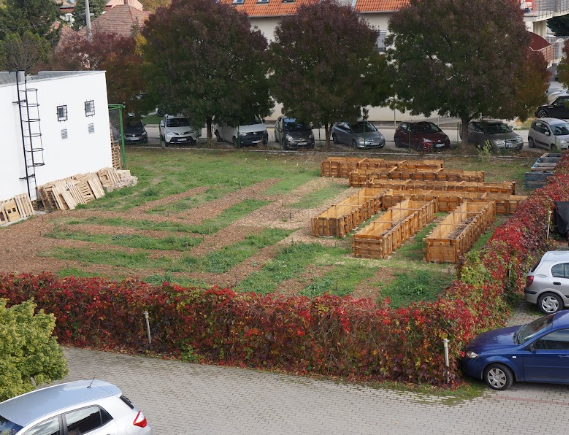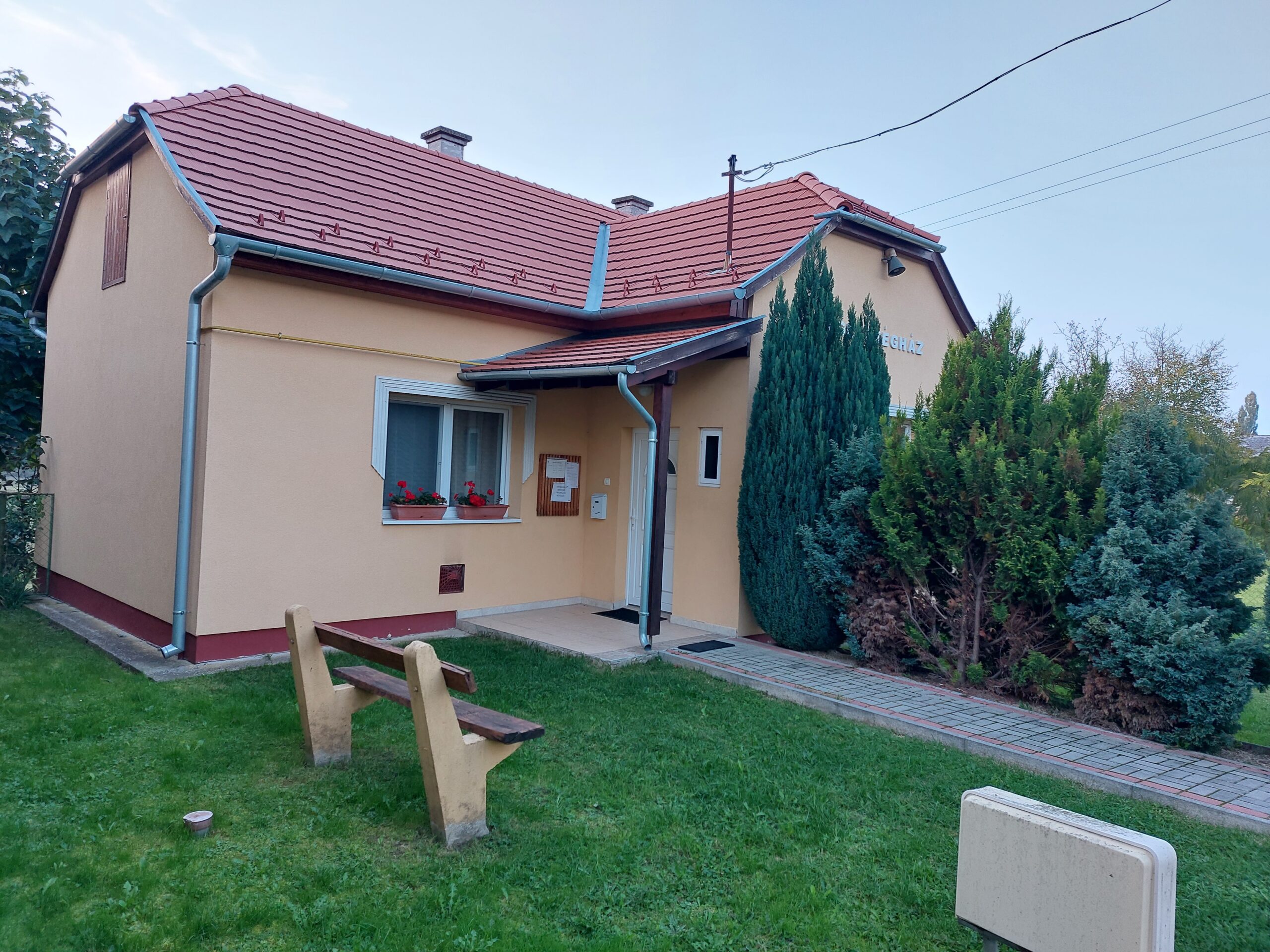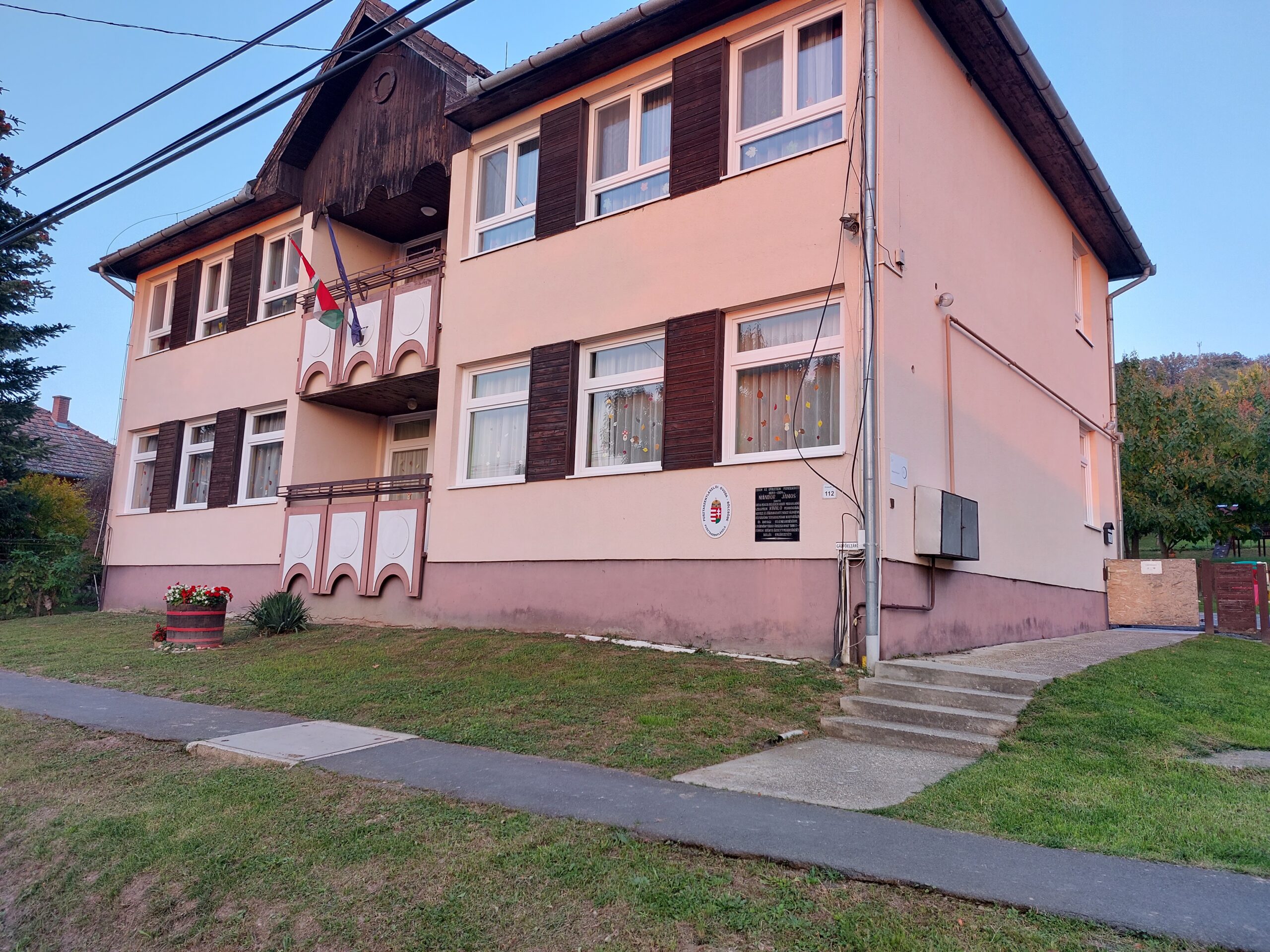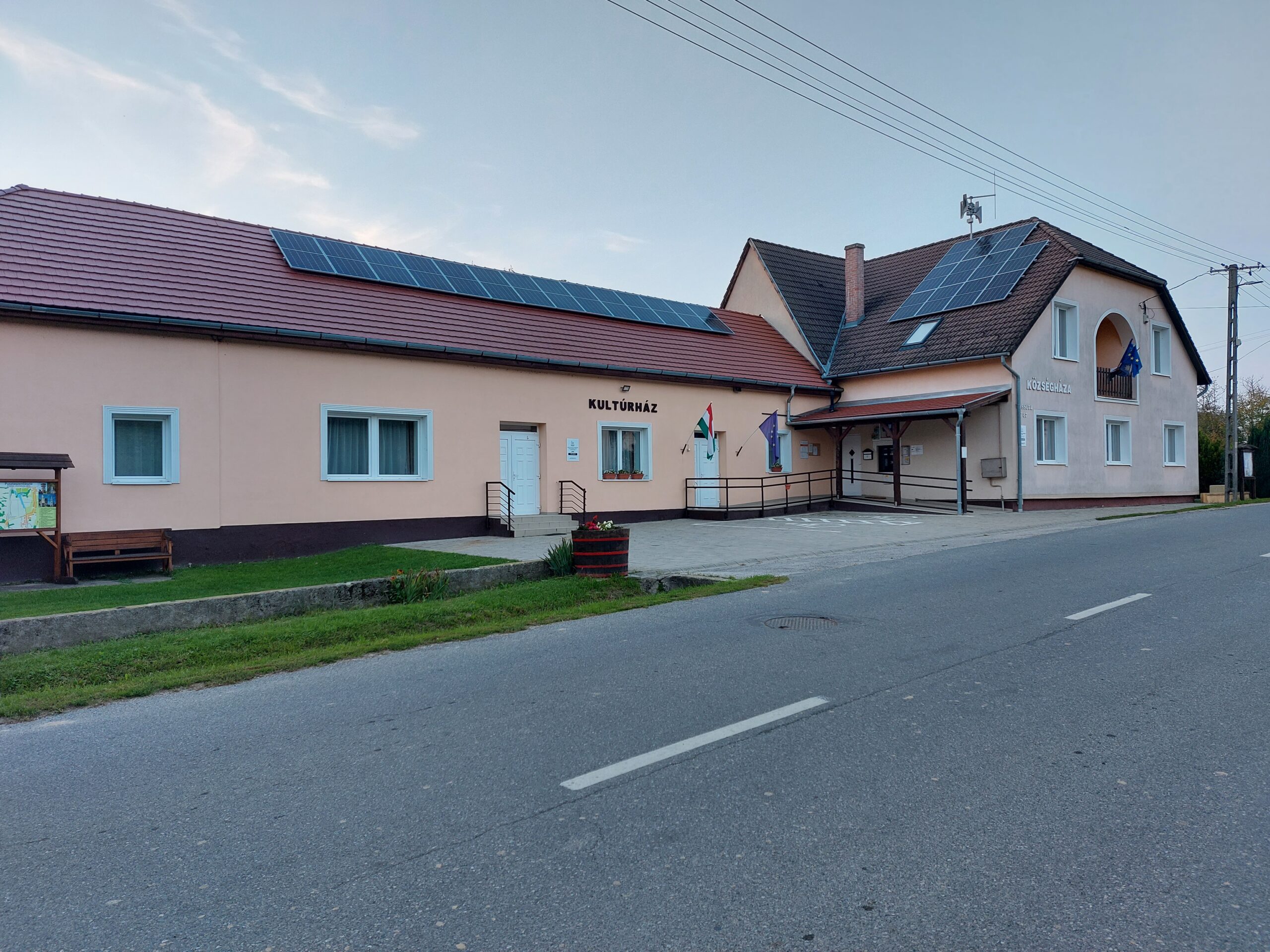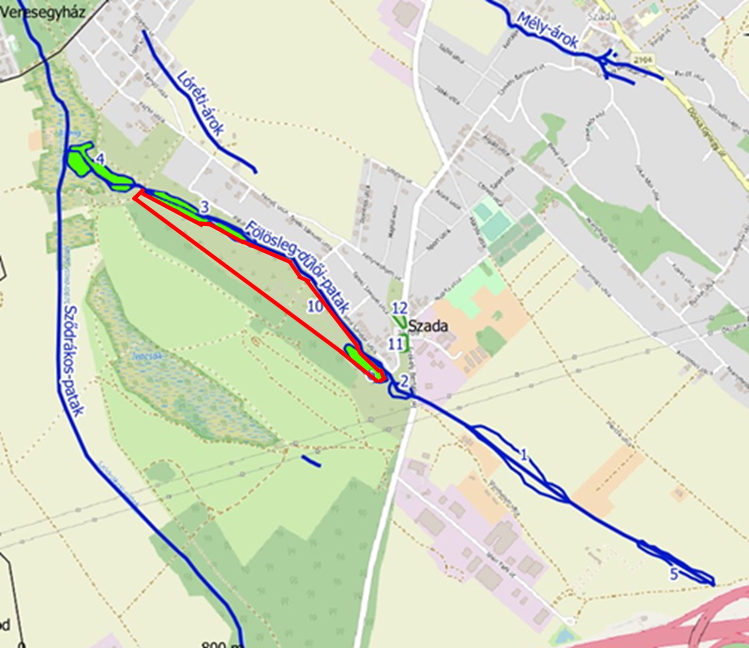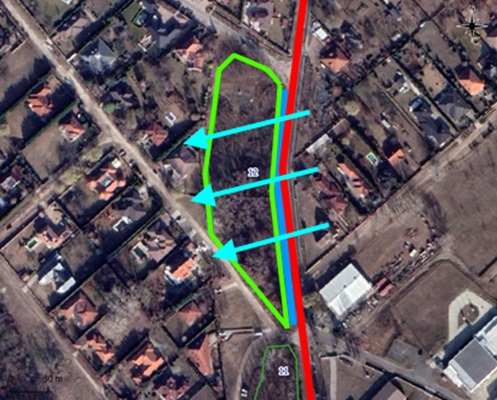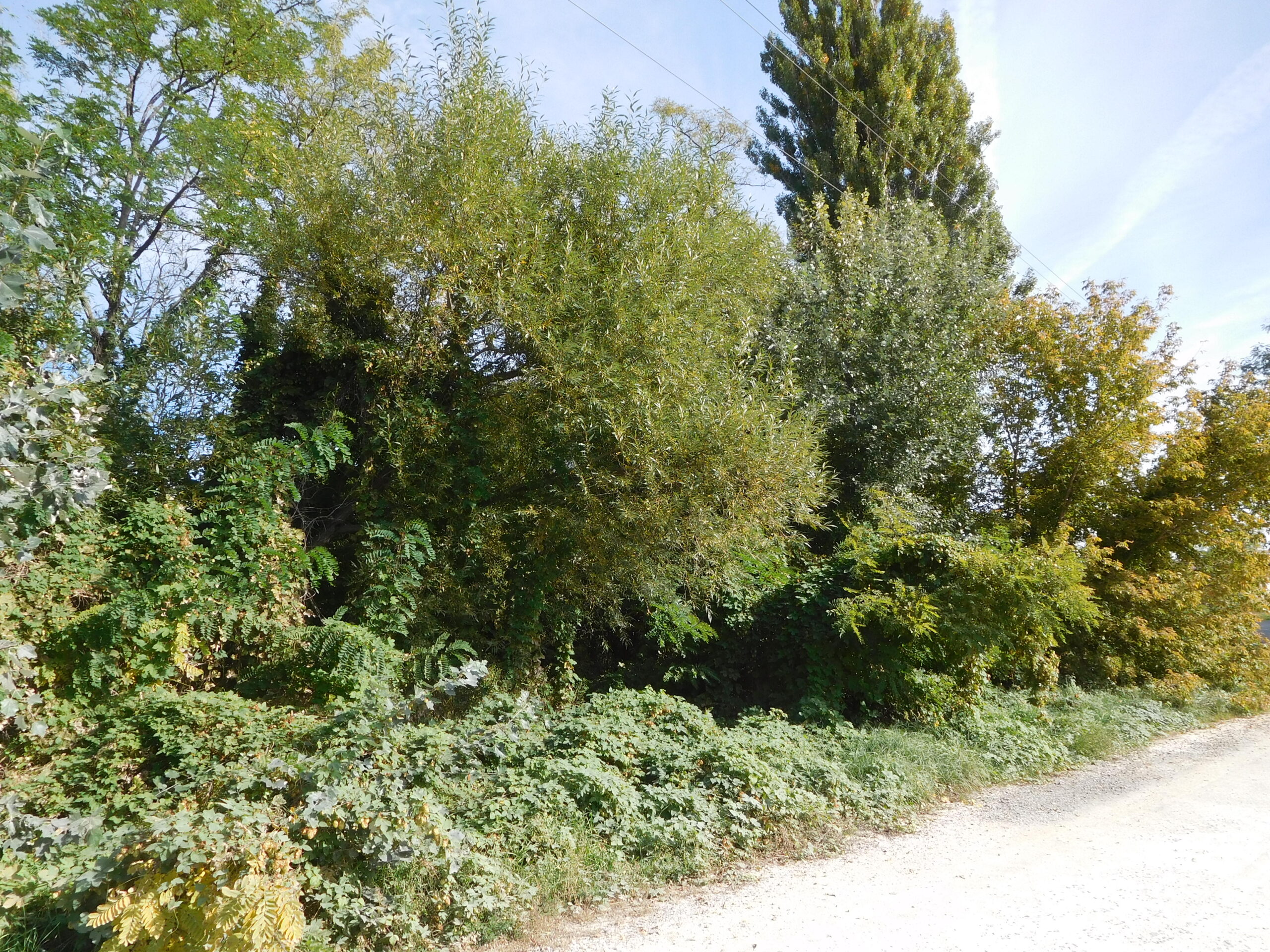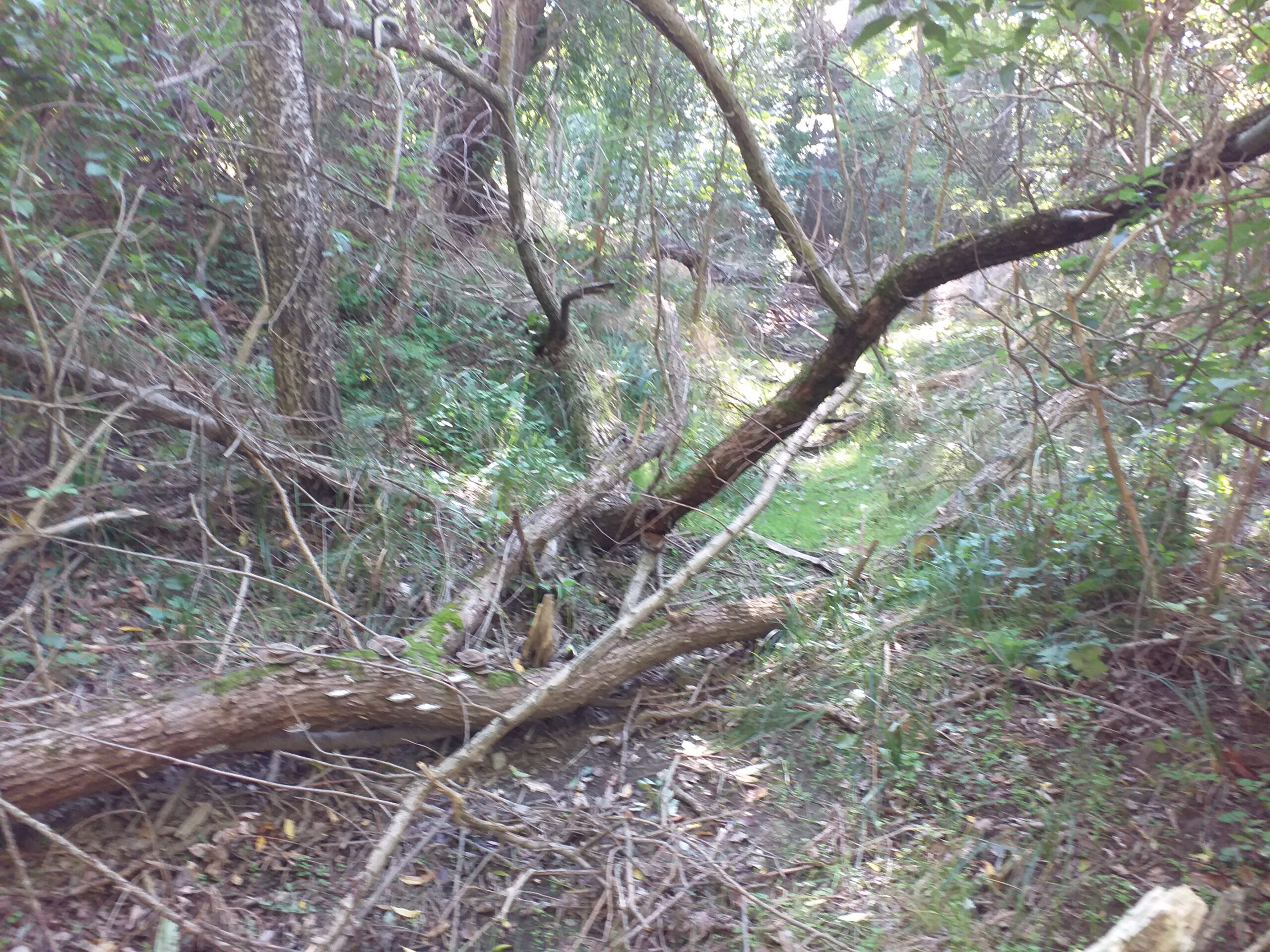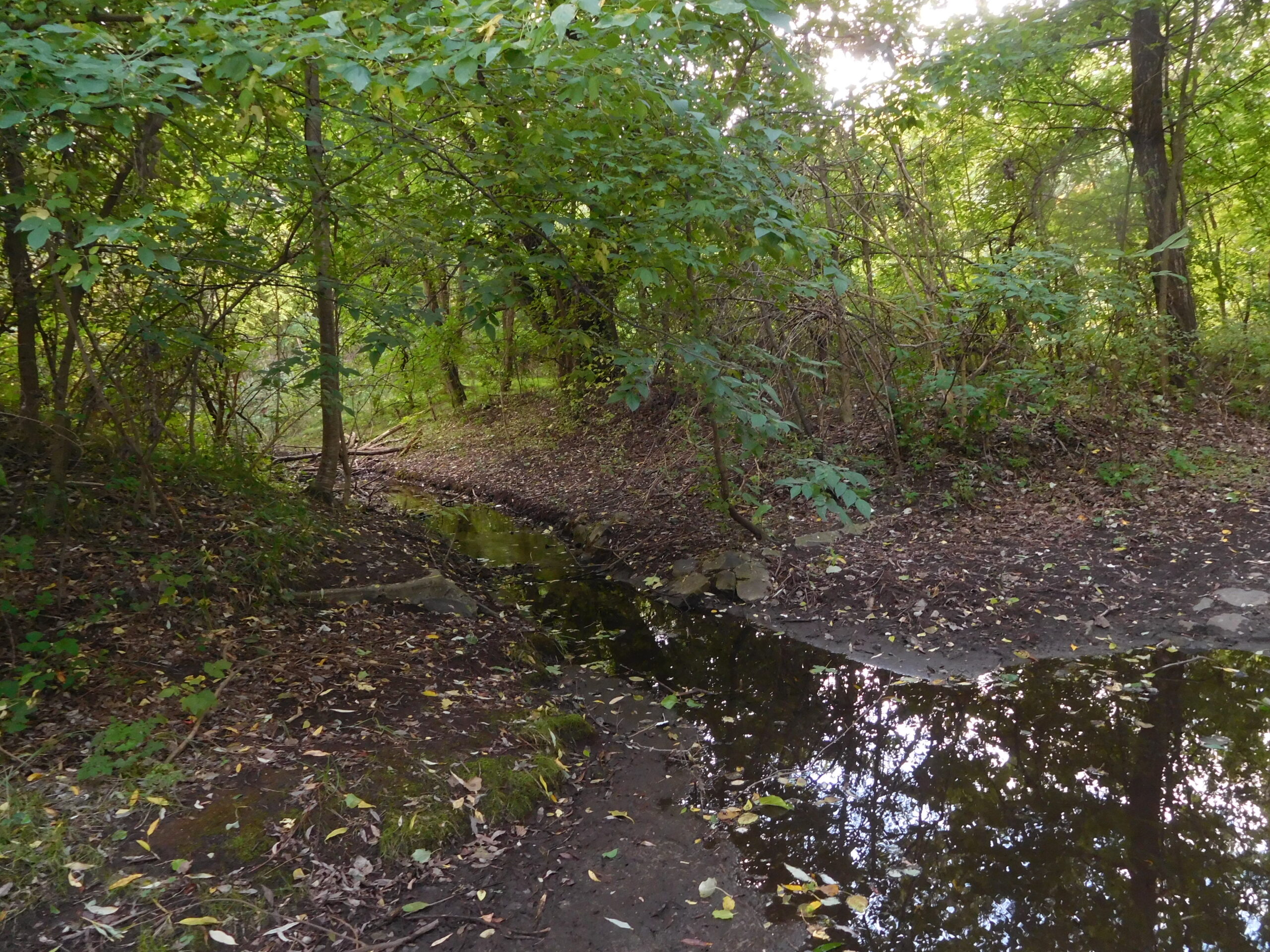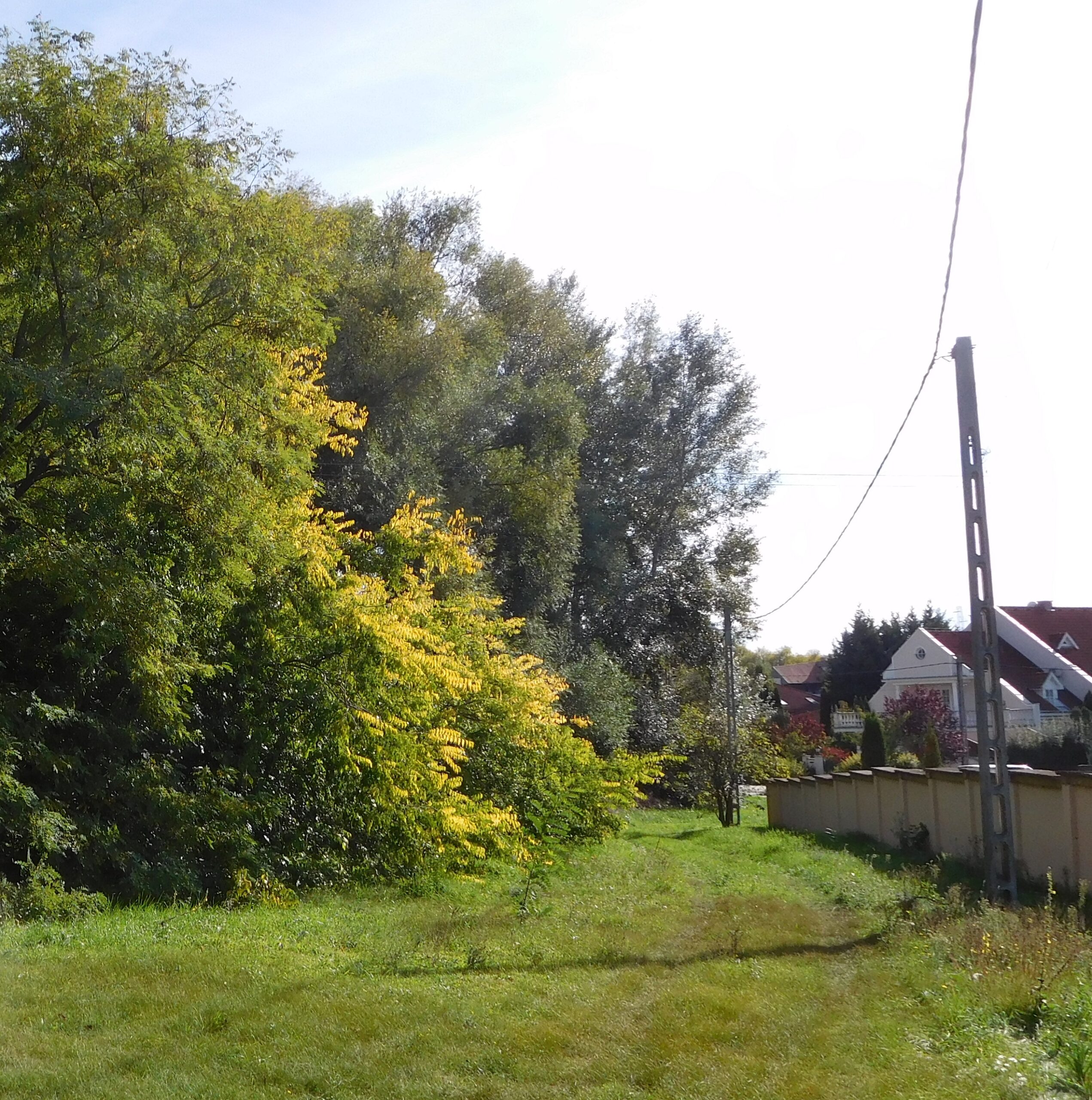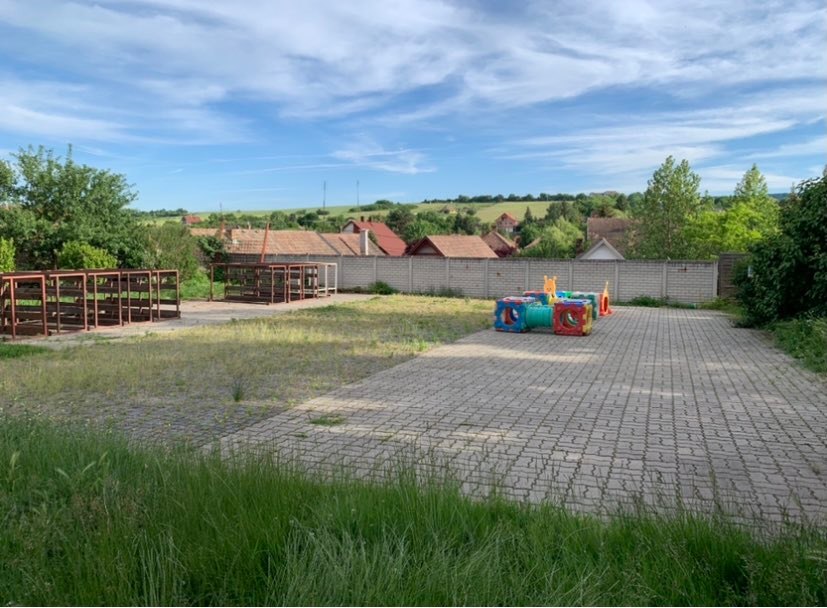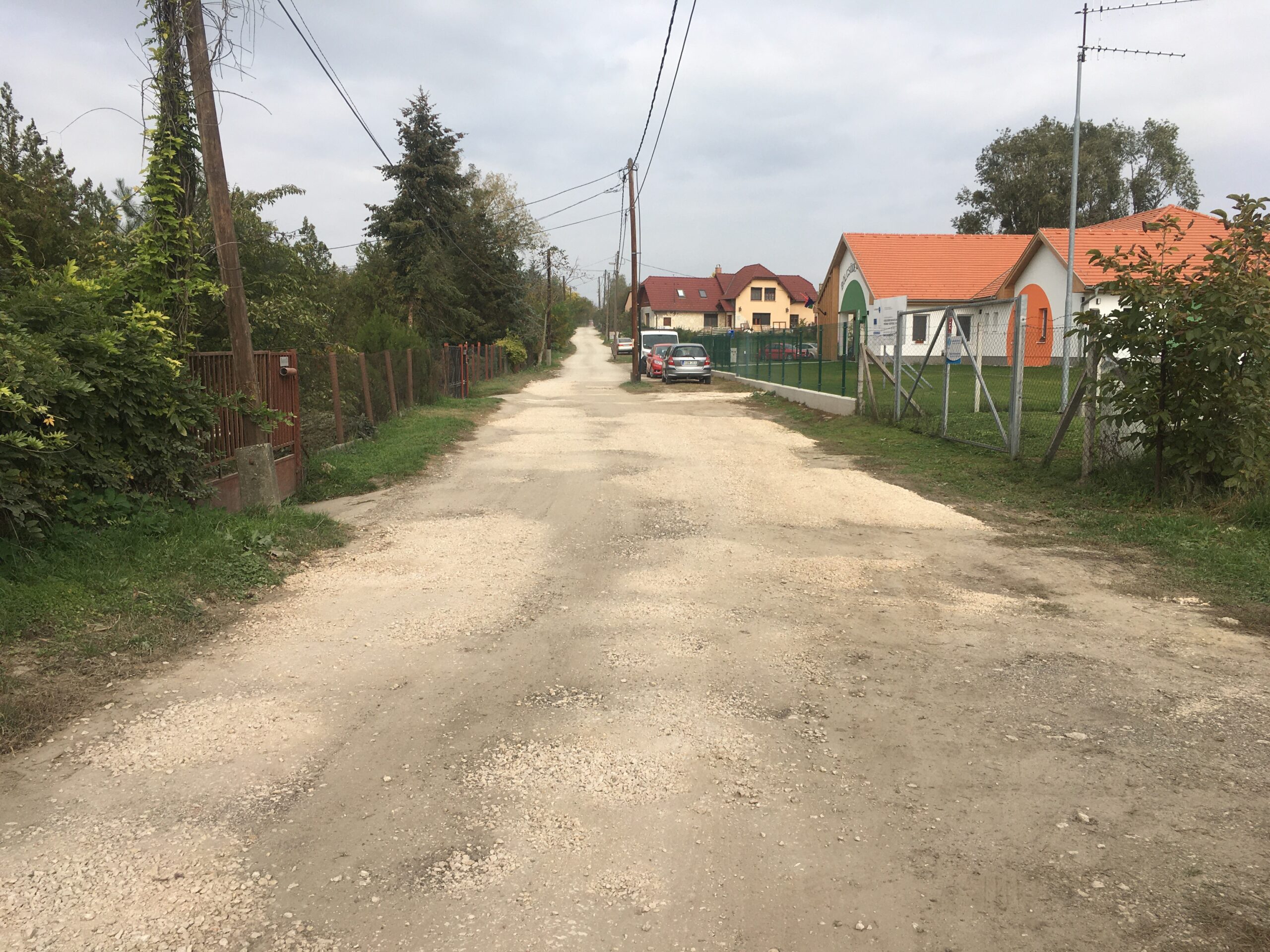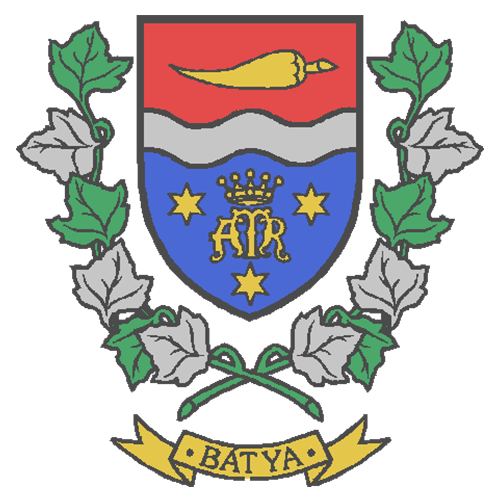Municipal Support Programme
Supported projects
Municipality of Bezi
Promoting urban forestation and rainwater harvesting among the residents
Total budget: 1 059 660 HUF
Granted support: 959 660 HUF
The water-related problem of climatic origin
The biggest water-related issue to be addressed would be an inland section of what was previously a water catchment area, and secondarily a fishing lake, but this would be a large-scale project, the approach and feasibility of which is still under preparation and is only at the planning stage.
In our small municipality, especially in the summer, not only in times of drought but also in a year with average rainfall, the task of watering public areas is a major hardship for the municipal staff. In recent years, this has also become more important. Since 2020, we have had an ongoing afforestation program, either with support or on our own, and this work is essential to keep the trees planted alive. With the involvement of the citizens, we want to solve one part of this problem by purchasing and distributing rainwater harvesters.
The other part of the grant will allow the continuation of the aforementioned planting of trees, this time on a stretch of street that does not yet have a tree.
Brief description of the technical content of the project
The amount of grant awarded under the present call for proposals will be used to continue the planting of trees that the municipality started two years ago. This time, we will plant ornamental trees on sections of the street that have one of the newest buildings in the village but lack vegetation, which can be useful for road maintenance as well as aesthetics. Specifically for the summer period, a major problem is the irrigation of the flowered and wooded areas of the municipality, which we intend to support by purchasing rainwater harvesters. The majority of the planned number of harvesters will be distributed among the population and local associations will also receive one if they wish, and some will also be placed next to municipal buildings to facilitate the work of those who maintain the public spaces of the municipality. It can be used to reduce the burden of daily watering in summer and also saves time.
Good ideas on how to coordinate the distribution of rainwater harvesters were given at the award ceremony. Any member of the public can apply for the tool, but as a condition of receiving it, the resident must agree to be visited at least once during the spring-summer-autumn period by a group of local schoolchildren or kindergarten children, at a pre-arranged time, to observe what kind of crops the family is growing, what techniques they use in their kitchen gardens to grow vegetables or maintain their flowerbeds. This is an extra opportunity for the older and younger generations to meet and get to know each other, as well as pass on environmental knowledge.
As an incentive, the municipality also plans to donate a certain number of seedlings for planting in case of each handed-out rainwater harvester.
Expected impacts and results
Improving the efficiency of rainwater management, thereby facilitating local tasks, as well as improving the quality of living place and inspiring intergenerational cooperation. A new initiative is the introduction of a plantation programme, study visits for nursery and primary school children.
Municipality of Budapest District XVII
The first rain garden in Rákoskeresztúr
Total budget: 3 667 277 HUF
Granted support: 3 167 288 HUF
The water-related problem of climatic origin
The Újlak Street housing estate is 148 m above sea level and from here to Pesti Street (135 m above sea level) the paved footpath of Kis Street runs perpendicular to the hill, which collects a lot of rainfall with a 4 m width and leads straight down to Pesti Street. This water is trapped in the parking lot below covered in pebbles and gravel, accessible from the Pesti road, where it does not infiltrate and is not used due to the compacted soil. In the event of heavy rainfall, excess standing water here can block parking and pedestrian access for days, and the stagnant water often causes algae growth. Water also flows from the asphalted surface to the stormwater drainage channel on Pesti Street, putting unnecessary strain on it. The vast, uninterrupted asphalt expanse of the promenade is, however, a depressing sight and completely pointless.
Brief description of the technical content of the project
By opening up a part of the asphalted area (80m2) to create a public rain garden, we aim to reduce drainage problems through water retention, while creating a pleasant recreational area. At the same time, the urban heat island effect can also be reduced by limiting the covered surface area. The resulting green oasis favors the microclimate, provides shade and oxygen, binds dust particles, and improves air quality.
Expected impacts and results
- reducing the load on the stormwater drainage network
- preventing the formation of stagnant water
- +80nm public green space
- creating a pleasant rest area, meeting point
- shading, oxygen production, dust and noise reduction, microclimate control
- community involvement in planting and garden maintenance education, awareness raising and leading by example through the practical implementation of climate protection and the use of local mulch and local manure
Municipality of Bugacpusztaháza
Living yard, greener house
Total budget: 1 932 500 HUF
Granted support: 1 835 875 HUF
The water-related problem of climatic origin
The sandy area between the Danube and the Tisza rivers faces several water management challenges at the same time. Bugacpusztaháza is a typical farmland area of the Homokhátság (region filled with sandy dunes). Global climate change can be felt, with the annual rainfall indicating a 5-year deficit. Its sandy soil, with an average water level of 12 metres, has been affected by drought for many years. One of the prerequisites for our survival is the ability to keep both natural and domestic water sources in place to make up for low and erratic rainfall.
Brief description of the technical content of the project
The municipality supports participation in the climate-friendly game with rainwater harvesters. The environmental game of the municipality is the “LIVING YARD GREENER HOUSE”, which aims to encourage and educate the residents to protect the environment and nature. During the 5 years of the game, participating property owners will have to take on one of the following tasks per year: selective waste collection, rainwater collection, and recycling, composting, energy-efficient household, and ecological wastewater treatment.
We would plant native trees to replace the dead ones planted under the landscaping program that started a few years ago and continue the tree planting that has been started.
Expected impacts and results
The aim of this project is to use and store water of natural origin and to raise environmental awareness among the population. With afforestation, the aim is to cover almost 2 hectares of green space. Of this, approximately 5,000 square meters have been completed. The aim is to plant as many shade-providing plants as possible, eliminating direct, hot sunny areas by covering the planted plants with mulch, stopping the evaporation of the applied irrigation water, and ensuring more efficient water absorption. Thanks to efficient water use, less water needs to be applied per irrigation. In the long term, we expect a positive development of the microclimate of the municipality, even if the impact will be felt only locally.
Municipality of Csömör
Rehabilitation of the banks of the Csömör fishing pond and construction of a log dam across the stream
Total budget: 3 684 211 HUF
Granted support: 3 500 000 HUF
The water-related problem of climatic origin
Much of the precipitation that falls on the settlement is discharged into the stream through surface drainage ditches. The large amounts of water that accumulated after the heavy rains caused the riverbed to become extremely deep beyond the inland section, creating deep ditches in some places. The deep running water has started to dry out the protected wetlands in the stream valley and has become very dry. Along the inland stretch of the stream, the sloping shorelines that form the bed are washed out in some bends by the sudden surge of water.
The artificially created fishing pond has a steep bank, and the characteristic riparian vegetation can only grow in a narrow strip. During the more pronounced water level fluctuations in recent years, the roots of the plants are dry and hang in the air. The narrow strip of vegetation also does not provide a safe breeding site away from the shore for water-dependent birds. The nests are placed close to the footpath. There is significant water loss due to evaporation, and the pond lacks reeds to shade the water. The lake has a significant population of bog turtles. They breed in the sand of nearby playgrounds and dirt roads, where the chances of survival of their offspring are low. They need a safe, undisturbed sandbank close to the water.
Brief description of the technical content of the project
The aim of the project is the creation of a “spillway reservoir” log dam on the Strand Square in Csömör, the creation of a small catchment area, and ecosystem-based water management, which can be promoted. It will be built next to the existing nature trail. The planned log dam will be approximately 4 m wide and 0.7 – 1.2 m high.
The two shorter shorelines (90 m and 100 m) of the Csömör Fishing Lake are to be rebuilt. Biodiverse habitat creation: the creation of a sloping shoreline, reed planting, breeding island for birds, nesting and basking area for turtles. There is little fishing activity here, but it would be possible to create a wider, 2-3 meter wide, sloping bank where the coastal reeds and other riparian plants can spread over a wider area.
Expected impacts and results
The planned interventions would greatly increase the ecological and aesthetic importance of the lake. The lake is a favorite destination for hikers from Csömör and the neighboring districts of the capital. It is also popular with young children, as a sports park and playground were previously set up next to the lake.
The municipality and several NGOs organize a number of events at both sites, so the planned interventions, if implemented, could become widely known and play an important role in promoting an environmentally conscious attitude.
Municipality of Füzérradvány
Total budget: 3 500 000 HUF
Granted support: 3 498 000 HUF
The water-related problem of climatic origin
In the Füzérradvány area, intensive forestry is being carried out, which causes a risk of soil and wind erosion, and a large amount of the cuttings are being burned.
Brief description of the technical content of the project
The Benjes hedge consists of two rows of columns. Green waste (branches, twigs) is stacked neatly between the two rows. The height of the hedge is 150 cm, so that the branches can be stacked comfortably by hand. The Benjes hedge is named after the brothers Hermann and Heinrich Benjes. Also commonly known as the “Bug Hotel”. The Benjes brothers, as keen nature lovers and landscape gardeners, thought about the rational use of dead wood.
Made from dead wood, stems, twigs and young sprouts, the hedge can soon take on a life of its own. The canes sprout, the deadwood rots and becomes nutrients. The hedge provides a habitat for animals that we would otherwise have to look for in our well-ordered environment. The wind and animals carry different seeds into the hedge, from which new life emerges. Animals (hedgehogs, shrews, lizards, slow worms and toads) also find shelter in the hedgerow.
Birds – the blackbird, robin and bullfinch – nest in it. Useful insects such as wild bees and bumblebees find shelter and also build nests there. In the beginning, the hedge needs little maintenance, the branches may need to be replaced. When the hedge is full of life, invasive tree and shrub species that are not native to the landscape should be removed.
Expected impacts and results
The aim of the project is twofold:
The hedge, which will be created in partnership with local residents and civil society organisations, will serve as a model project to demonstrate the steps and versatile functions of this special type of hedge.
In the spring of 2022, the Citizen Guard Association was reorganised in Füzérradvány, which – along with the recruitment of new members – has supplemented its activities to solve public problems and is committed to solving such and similar tasks.
The established hedgerow will contribute to biodiversity enhancement, soil conservation and carbon sequestration, which by its very nature is achieved through the use of species from local, typical plant communities. The hedge will reduce wind and water induced soil erosion.
For many years to come, the hedge will provide an opportunity to use some of the green waste generated in the municipality and maintain its colourful flora and fauna.
Municipality of Gyenesdiás
Every raindrop counts
Total budget: 3 675 000 HUF
Granted support: 3 500 000 HUF
The water-related problem of climatic origin
In Gyenesdiás, the more extreme weather caused by climate change manifests in rapid downpours of heavy rain, and warmer, drier periods over longer periods in summer. Rainwater harvesting is crucial for more balanced irrigation, thus reducing the use of tap water and indirectly contributing to climate protection.
Brief description of the technical content of the project
The project will provide 62 complete rainwater harvesting tanks of 210 litres (tank, tap, rain stopper, stabilising base) and 1 litre of Kondisol plant conditioner per tank for five years to the population in order to achieve a more balanced irrigation. In addition, the winners will also receive a one-off supply of vegetable and herb seedlings in the spring of 2023.
To apply for a water tank, a resident must
- undertake to grow vegetables on at least 10 m2 of its own garden in season for a period of 5 years, and to maintain a vegetable garden,
- undertake to participate in at least 10 professional presentations of the Garden Friendly Circle over a period of 5 years,
- commits to bringing a basket of home-grown produce for five years to the Garden Basket Review in September organized within the the framework of the Potato Day,
- undertake to keep and use the rainwater harvesting container for five years,
- agree to use 1 litre of Kondisol plant conditioner per year for 5 years.
Expected impacts and results
The proliferation of the eye-catching and highly practical Aqua Can Baby 210-litre rainwater harvesting containers is hoped to encourage backyard gardening and inspire people to grow their own fruit and vegetables for their families. Through the good practices of their own families, children learn the basic steps of healthy crop production and pass on this mentality, which is increasingly important in facing the vulnerability of convenient multinational supply. In line with the conditions of the application, participation in the events of the Garden Friendly Circle has an awareness-raising character.
The great advantage of the project is that it is based on a circular system, as the seedlings distributed in the spring as part of the “One House Plant” campaign are used to produce a harvest basket at the Garden Basket Review event in the autumn. At the professional events of the Garden Friendly Circle during the year and at the autumn Garden Basket Review, experts give advice that results in better and better quality home-grown vegetable gardens in Gyenesdiás year after year.
Municipality of Halastó
The waterless Halastó - A pilot project with social cooperation for water retention using the precipitation of Halastó to support nature.
Total budget: 4 209 000 HUF
Granted support: 3 500 000 HUF
The water-related problem of climatic origin
The streams were heavily regulated in the 1970s, with deep dredging. As a result of these interventions, the condition of meadows and wetlands is deteriorating.
Brief description of the technical content of the project
The project would involve municipal, state and private land, with private meadows and woodlands adjacent to the stream. At the design stage, we would raise the depth of the stream bed to the 50-year-old pre-regulation level and shape it into a cup. 3 water retention measures will be installed, a long earth dam, a log dam and a dam with adjustable sluice.
From a surface area of about 15 hectares, flash floods occasionally come to the Main Street where the furniture manufacturing plant – with more than 1 hectare of roof and concrete surface – is located, their combined water yield is received by the Bük stream..
The aim of the project is to retain these waters for nature’s benefit, and to release them in a controlled way in case of intense rainfall. The Main Street ditch would be diverted towards a private meadow, in a wide bio-ditch behind a low earth dam system. We would also create a flat earth dam up to 1 m high on the Bük stream, with an innovative adjustable sluice.
The small amount of water that run off from the plant will always reach the bio-ditch, exerting its silting and beneficial effects on the habitat and in local hydrophytic crops. More water will be spread out in the meadow and the alder forest, from where, in a few hours or in a couple of days, the controllable beaver dam can be lowered downstream with a sluice.
We believe that water retention measures will be acceptable to farmers if we give them a free hand to control the level of water (e.g. open sluice during hay harvesting, closed continuously from autumn to spring).
Expected impacts and results
We see our intervention as a complex pilot project, and following its success, we want to disseminate it widely. We produce publications and a website, and document the implementation in detail. We will lead visitors to the site on a hiking trail, with the aim of practical education.
Results are expected in terms of increased groundwater levels, improved habitat conditions for meadows and forests, and increased grass and wood yields. As well as increased water yields and improved water quality in downstream springs, we are also hopeful for the emergence of wading bird species.
Following the success of the project, we would like to take a further step to convince the community of our municipality to implement water retention measures for our entire area. We would also like to continue with a series of small interventions up to the watershed boundary, filling in the ditches in some places. As well as a further series of minimal interventions in the lower sections, with a series of flat earth dams and log dams up to 1 m high.
Our late goal is to launch a larger-scale, broad-based programme, the core of which is the moorland forest managed by the Őrség National Park, a Natura 2000 site in the Sárvíz area.
Our long-term, but all the more determined goal is for the municipality of Halastó to prepare a complex water retention programme covering the entire watershed of the Bük stream, including meadows, forests and any publicly managed areas, within a 3-5 year interval.
Municipality of Hosszúhetény
Climate-conscious water retention in Hosszúhetény
Total budget: 3 492 500 HUF
Granted support: 3 492 500 HUF
The water-related problem of climatic origin
Hosszúhetény lies on the southern slopes of the Zengő in the East Mecsek. Its water situation is a combination of factors typical of mountain areas: rainwater runoff from the mountain along forest roads, vineyard roads, and village streets is largely drained from the village through the ditch systems. Water erosion is a typical problem in the side streets. The rhapsodic rainfall patterns develop because of climate change, these sudden downpours place a heavy strain on the drainage system, while long dry spells cause water shortages. Water run-off from the mountains is no longer replenished, and unprecedented drought is being observed in forests, fields, and farmland.
The solution requires a complete change of mindset: we need to change our water habits for the sake of a liveable environment. It is vital that rainwater run-off is kept within the village as much as possible and infiltrated into local soils at a processable scale. The natural environment surrounding the village is one of its most important assets. It is in our interest, not only ecologically but also economically, to do all we can to protect the environment – natural water conservation is an important part of this.
Water retention should be built up inwards from the outer regions so that the village receives a minimum amount of run-off from the hillsides. In the outer regions, runoff can be slowed down in stages and spread to areas along roadsides. In the interior, runoff from rooftops should be used in as many ways as possible before being discharged into the sewer system.
Brief description of the technical content of the project
- Water conservation on dune roads
Most of the dirt roads running along the mountainside run perpendicularly uphill. They therefore act almost as drainage ditches, where rainwater runs off in a trickle. On the one hand, these areas lose valuable water, and on the other hand, the force of the water causes continuous erosion, making it impossible to maintain the roads in good condition. A simple solution to this double negative effect is the use of a so-called “river channel”: a shallow trough of simple design, made of concrete, which diverts the water by being placed at a slight angle to the road, to one side. The flume discharges water into the green space next to the road, where it seeps into the soil and feeds it. The slope of the road determines the density of the watercourses.
The following activities will be carried out under the project: two typically water-stressed vineyard roads in the vineyard will be provided with full-length watercourses. A total of 20 watercourses will be created. In total, approximately 1 100 m of road will be equipped with water retention channels. With an average annual rainfall of 500 mm, this will retain 1650 m3 of water per year in the immediate border areas, prevent erosion of the roads and significantly reduce the water load flowing into the village.
- Water retention in the landscape
Landscape-level water conservation is particularly important in areas with varied topography, such as Longevity. Any landscape-level farming can only be successful and sustainable in the long term if it works in conjunction with the landscape. Level farming is the most basic means of natural water conservation that we must learn to apply in hilly areas. A water retention intervention called a belt ditch is a shallow trench running along a level line that stops surface water flowing downhill and spreads it through the soil. This method can also be used to successfully plant woody vegetation in arid areas, which is particularly important in the slopes of the Long Meadows.
The project will involve the following activities: the establishment of bunds on a hillside farmland and tree planting along the bunds. The municipally-owned, approximately 3000 m2 of private land is currently a meadow turned into a field. Here, 2 50-metre-long belt ditches will be set up, along which native trees will be planted by volunteers.
- Water conservation around the house
In the interior, water retention no longer means just water running off the road, but also rainfall on rooftops. As paved surfaces are typically abundant in interior areas, water retention also plays an important role in improving thermal comfort. There is a need for open water surfaces for evaporation. A garden pond is an excellent way for residents to get involved in community water conservation and climate protection.
We will carry out the following activity under this project: a garden pond at the Blackberry Community Centre in the village centre, run by 3 NGOs. The pond will be fed by rainwater from the rooftop. This will improve the Community House’s own water retention system and create another showcase for the community.
- Water retention in the interior vegetation
Trees are one of the most important means of water retention in the interior, and within that, of vapour retention. Large trees should be located in as many places as possible to cool their immediate surroundings through shade and evaporation.
The following activities will be carried out as part of the application: we will organise community tree planting in two popular playground areas used by the village population. This involves the community planting the trees together, involving children in the project. In total, 50 trees will be planted.
Expected impacts and results
In the framework of the application, we want to implement a practical, awareness-raising project that will actually install water conservation interventions in the village at several locations, with different water conservation functions. These interventions will both improve the water management in the village and provide a permanent good practice and demonstration site for the local population and other municipalities to view and pass on knowledge. The project will work in partnership with local people and NGOs, and will be supported by local companies. Everyone has a role to play in community water conservation, so it is important to involve and motivate the village community. In addition to the physical implementation, communication will be an integral part of the project: a newspaper article and local TV broadcasts will be produced, and the issue of water conservation will be addressed on an electronic community platform.
It is important to raise awareness of the importance of water conservation. A comprehensive communication campaign will be organised in connection with the project. All activities to be implemented will be reported in the local newspaper, on local online TV and on the municipal website. These activities will be carried out on a voluntary basis to support the project.
Educational opportunity and civic link: The water retention zone created by the intervention will be an excellent demonstration site for other municipalities. For the civil population, the NGO Hungarian Parma Culture Association (MAPER) will be a partner. The MAPER site in Hosszúhetény borders on one of the dune roads concerned. The site regularly organises education and training courses for interested parties, including on water conservation. In the future, these training sessions will also include a detailed explanation of the functioning of the new water retention zone, thus raising water awareness among the population.
The House is run jointly by the Footpath Foundation, the Zengő-Mozgó Association and the local NGOs of the Scout Circle. As the House regularly hosts courses, meetings and training sessions, this intervention will in the future be open to many people. Volunteer members of these organisations will participate in the creation of the garden pond, which will take place in a workshop day. The maintenance of the pond will also be carried out by the NGOs in the future.
Municipality of Perőcsény
Water retention by beavers and conflict management at the Perőcsény
Total budget: 3 972 000 HUF
Granted support: 2 392 000 HUF
The water-related problem of climatic origin
Due to the extreme flow of the Orzsán stream in Perőcsény and the increasing frequency of water shortages, wetlands and natural habitat patches along the stream are disappearing, which is not only climatic but also due to the channelization of the stream. Therefore, we think it is necessary to make the stream wild again, and as a means to do so, our project aims to support water conservation and water management activities of beavers along the stream in the alluvial catchment of the reservoir used as a fishing lake. The beavers’ activities have significantly improved the ecological condition of the wetland in the reservoir and the water supply of the alder grove along the stream, and have spectacularly increased the biodiversity of the area. The beavers have created and maintained an amphibian breeding habitat and ecological corridor of outstanding importance on the landscape. Their activity also helps with slowing and diverting stormwater runoff from the stream (beaver dams, side channels with beaver canals, and bends). The beavers’ presence and activity provides a natural and self-sustaining water conservation and spillway reduction solution, and environmental and climatic benefits.
Brief description of the technical content of the project
The dam of the spillway has been weakened by past flooding and beaver migration, so improving the condition of the dam and protecting the dam body is essential to manage the conflict, for better functioning and for the survival of the wetland. The beaver passages in the dam body will be filled using hand tools under the guidance of hydro-engineers: the root-ridden topsoil will be removed from the dam crest and will be removed from the bottom of the passages. The passages are then filled in layers of compacted fill. The erosion susceptibility of the embankment crown and the gravel surface will be reduced by grassing. In order to prevent the formation of new beaver channels, galvanized wire mesh will be laid and anchored in the vicinity of the water edge on the dam’s raised copper surface. A 15 m long corrugated culvert pipe with a minimum diameter of 300 mm and a filter will be installed in the upper part of the beaver dam to act as an overflow. This is intended to take over the role of the tidal weir, which is blocked by the beaver dam. Another essential part of the project is monitoring, which will be carried out using high-sensitivity wildlife cameras. The purpose of the monitoring is to track the activities, movements, and dam use of species in the area.
Expected impacts and results
With this project, we would like to contribute to the development of locally applicable good practices for micro-management of similar conflict situations. We anticipate that supporting beaver activity and keeping beavers in place will have far-reaching and spill-over ecological effects on the stream and its riparian (once wetland) habitats, allowing stream restoration to occur naturally. Restoration is of utmost importance to address the water deficit in the area (at the landscape scale) and to restore and preserve the disappearing wetlands. Based on our studies to date, we expect a significant improvement in the water quality of the reservoir (fishing lake), which will provide social and local community benefits. Supporting natural water conservation and water management by beavers could serve as a model for areas of water scarcity, thereby improving the social perception of the species. Monitoring will provide valuable information and data on the ‘evolution’ of beaver bogs, the increase in diversity, and the multiple ecological impacts. The wetland managed by beavers is a refuge, habitat and feeding ground for many rare and endangered species (wildcat, black stork, amphibian species, bog turtle, etc.).
Municipality of Pomáz
Reserve it!
Total budget: 2 260 000 HUF
Granted support: 1 810 000 HUF
The water-related problem of climatic origin
As more and more extreme weather phenomenon occur, the sudden and heavy rainfall is a huge problem, flooding basements, washing away and making roads unusable. At the same time, when the rain has stopped, the countryside is hit by drought, which is not only a problem for farmers and gardeners, but also for the population, who suffers from the heat, dusty roads and lack of shade of trees in public areas.
Brief description of the technical content of the project
As we believe that substantial change can only be achieved by changing the attitude and that causing a change in everyday (water) consumption and habits, our programme aims to encourage people to do so by presenting good examples.
Our programme is built of two main parts:
1. Awareness raising and promotion at “theoretical” level
- Organising a climate conference
- Development of a learn about rainwater themed path
- A series of articles in the local newspaper and on the city website
- Launch of a support programme for the public (to support individual implementation of solutions presented in good examples)
- Drawing competition
2. Practical side (solution samples)
3. Demonstration of rainwater harvesting and utilisation
- Designing a variety of roof water tanks, water fountains
- Creating rain gardens on slopes and roofs
- Planting trees
Expected impacts and results
Our goal is to provide simple, low-budget solutions that people can implement individually making easier for them to adapt to extreme rainfalls. The main benefit of technical solutions is that they show that individuals can do something for themselves and their environment, and that responsibility cannot be shifted entirely to intangible agencies or even to factories and industrial service providers. This helps shaping the residents attitude toward sustainability and to strengthen the role and responsibility of the individual. An additional benefit is the greener and prettier urban environment (tree planting, rain gardens), but it also helps reducing the damage caused by storms in a budget-friendly way.
Municipality of Pusztaszentlászló
Conscious water management at Pusztaszentlászló
Total budget: 3 305 500 HUF
Granted support: 3 305 500 HUF
The water-related problem of climatic origin
The municipality of Pusztaszentlászló, due to the rising temperatures and poor precipitation caused by climate change, has been experiencing problems with irrigation of public facilities and public areas. Thanks to tourism investments in recent years, the municipality is attracting more and more visitors. The image of the village is important to the municipality, such as the flowers at public spaces. We would like to use the project to take care of these areas in an environmentally friendly way by collecting and using rainwater.
The Municipality of Pusztaszentlászló would like to show the residents that rainwater harvesting and utilisation is one of the simplest and most efficient way of watering the garden. Rainwater has been collected and used ever since the ancient times. Yet today we have to relearn what was evident two generations ago.
Brief description of the technical content of the project
Rainwater collection tanks are placed on buildings owned by the municipality, and these containers are used to fill up the ollas in the flowerbeds at the institutions and public areas.
An olla is an unglazed earthenware container with a wall that lets water through slowly and is therefore ideal for watering. The pot should be dug into the ground, up to the root of the plant and filled with rainwater. When the soil becomes drier, the outflow is accelerated; when the soil is wet, the water does not leak out of the pot. This type of irrigation is very efficient and economical. The pots can be used for decades with proper care.
8 rainwater harvesting tanks will be purchased for public institutions. 55 olla will be installed on the premises of the institutions and in public areas. 70 rainwater harvesting tanks will be provided to the residents, encouraging them to manage water sustainably.
It is important to involve the general public, especially young people in the project by setting a good example. The project includes awareness-raising activities for people of all ages and active “work”, e.g. digging and putting down ollas.
Expected impacts and results
The indirect objective of the project is to increase families’ climate and energy awareness. To start preparing for and adapting to climate change by setting good examples to them. The direct objective of the project is to make use of the natural resource available (rainwater). By harvesting rainwater we can replace activities that previously used tap water. Watering and maintenance of plants in public places does not require the use of tap water. A key advantage is that rainwater is free, no water and service charges needed to pay. We make the community of children and adults receptive to tackling environmental problems locally and on a small scale. Teaching children about environmental awareness is a key issue.
Municipality of Szada
Innovative water retention developments in Szada
Total budget: 7 807 000 HUF
Granted support: 3 325 000 HUF
The water-related problem of climatic origin
1. Drainage problems of the Bertalan Székely road culvert and its surroundings
The Székely Bertalan road provides access to the central parts of Szada from the south. In the eastern direction it borders on higher areas, which are heavily built up, but the drainage is not sufficiently solved, therefore the rainwater from these areas flows towards Székely Bertalan Road, sometimes over it, endangering the properties on the other side of the road.
2. Reduction of groundwater levels in and around the Szada Sample Area
Decades ago, the bed of the Fölösleg-Dülő stream was dredged straight and deep, which led to a significant lowering of the groundwater table. One of the nature conservation values most at risk due to the drying of the landscape is the Szadai Sample Area along the middle reaches of the stream. In this area, the Tavirózsa Association and Szent István University launched the internationally renowned Species Conservation Sample Programme for the Mudminnow in 2008. Here, 10 groundwater-fed, cubic pond beds with a volume of 60 m3 have been created. The ponds have been stocked with the highly protected marsh sparrow, protected meadow pipit and broad-leaved cormorant, with a combined conservation value of more than 10 million Forint. Record drought and increased groundwater use (irrigation) due to new houses have put the water supply to the ponds at a critical point in 2022.
Brief description of the technical content of the project
1. Solving the drainage problems of the Bertalan Székely road culvert and its surroundings
On the higher, eastern side of Székely Bertalan út there is no way to delay the run-off, so in order to prevent flooding of the residential properties on the western side and to manage the water along the road, a forested rain garden and leach field can be installed in the forest patch between the road and the western houses. The rain garden will be created while preserving the valuable/ageing trees of the sparse tree population in the grove area, and will be designed with a natural bed morphology (e.g. flat, landscape “gullies”, irregular shoreline, different bottom depths), native shrub and tree planting (with the involvement of the local population).
2. Water retention in and around the Sada Sample Area
Along the eastern boundary of the Szadai Sample Area, along the Fölösleg-Dülő stream, water-demanding vegetation (reedbeds and softwood floodplain forests) has been established in the lower-lying strips, in sections. By narrowing the stream channel at appropriate points (e.g. by local or intermittent bank raising, log walling and/or fencing with alien trees felled in the rain garden), water can be “retained” (intermittently, by retaining higher yields) in these reedbeds and grasslands. The solutions described can be used to help water the sandy, channelised stream beds and the drying/drying landscape caused by climate change, or to delay the run-off of large stormwater runoff from the highway. In the target area, there is also potential to raise the river bed – and thus the groundwater table – while protecting the residential streets on the right bank. Here we are planning to construct embankment fills by placing earth fills between log crosswalls in defined sections. Another variation is the installation of slurry logs, or peat bunds, which raise the bed by capturing sediment from the upstream waters without disturbing the bed and its surroundings.
Expected impacts and results
The creation of the forested rain garden will eliminate the threat of flooding to Bertalan Székely Road and residential properties, and create a more refreshing, natural habitat in place of the current weedy grove area. The planned planting of native trees and shrubs in the forested rain garden and the felling of alien trees will provide an excellent opportunity to mobilise and involve the local population. The stream-side interventions will raise the water level of the marshy ponds in the Sada sample area, reducing their vulnerability to drought. In addition, the condition of the protected marsh and swamp habitats along the stream will also improve as a result of better/ more balanced water supply.
Overall, both project components will help to conserve water in the municipality, which will both increase the water supply to green areas and agricultural land and have a positive impact on the microclimate.
Municipality of Szokolya
Revitalization of a public garden at Szokolya
Total budget: 2 241 000 HUF
Granted support: 2 191 000 HUF
The water-related problem of climatic origin
In Hungary, settlements are increasingly exposed to the negative impacts of rising average temperatures, decreasing precipitation and changing rainfall patterns. Climate change is projected to lead to a significant reduction in water resources, extreme weather events such as heat waves and droughts, and extreme rainfall. In order to avoid these, the Municipality of Szokolya has set the following objectives for the LIFE LOGOS 4 WATER project:
- to reduce the paved surfaces of the south-facing courtyard of the Mányoki Ádám Culture and Education Centre, which is maintained by the municipality.
- greening the south-facing facade of the building with a support system
- creation of new green areas, planting of trees to create shades
- collecting rainwater from the large roof surface into a 5 m3 tank
Brief description of the technical content of the project
In front of the solid concrete fence running along the south side of the Culture and Education Centre courtyard, a new green space will be created by breaking up the paving to a width of one and a half metres. In addition to the new green area, we also want to make the old plant strips multi-layered – ground level, shrub level and canopy level – to increase their water retention capacity. The building facade will be supported by a system of direct-growing, resilient, traditionally found in village gardens, thus reducing the heating of the wall during the growing season. We would collect rainwater from the large roof surface into a 5 m3 underground tank, on top of which we would install a traditional Norton-type cast iron handle well. The water would be used to irrigate the green areas.
Expected impacts and results
We would like to make the courtyard of the Ádám Mányoki Culture House, maintained by the Municipality of Szokolya, suitable for community events. The building is located in the centre of the village, where most of village events take place. There is a great need to connect the outside spaces to these events, and there is a growing demand on using it as a festival and wedding venue. As a part of the project green spaces will be created and renewed, so it can provide a more liveable area with a more favourable microclimate, which can be reoccupied by the residents. We would like to use the collected rainwater in several places in Szokolya to maintain in the long term the green areas at our streets.
Municipality of Tata
Creation of rain gardens for water conservation at Nádas Street, Tata
Total budget: 20 452 461 HUF
Granted support: 2 755 000 HUF
The water-related problem of climatic origin
The area around Nádas Street was a closed garden area before. Due to the intense urbanisation of the area, the municipality built a Nursery, which was recently opened. In parallel with the construction of the road to the nursery, the municipality is also working on improving stormwater drainage, but in the formerly closed garden area, the lack of stormwater drainage networks could be addressed by the creation of rain gardens to alleviate and eliminate the problems caused by flash floods.
Brief description of the technical content of the project
The appropriate sized land is provided through the expropriation of private land. Due to the slope, rain gardens will be created in one lane – on the west side of the road – between the road and the private land, covering a total area of 500 m2.
Expected impacts and results
Through the implementation of the project we would like to promote rain gardens and the local use of the water, so we will organise an event, under the guidance of the Main Gardener of the city of Tata, where the residents of Tata can learn about the process of creating rain gardens. We plan to involve locals (residents, contractors) in the implementation. During the construction of the rain gardens, we would like to provide further assistance with a new brochure entitled “Building a rain garden at home”, written by the experts.


